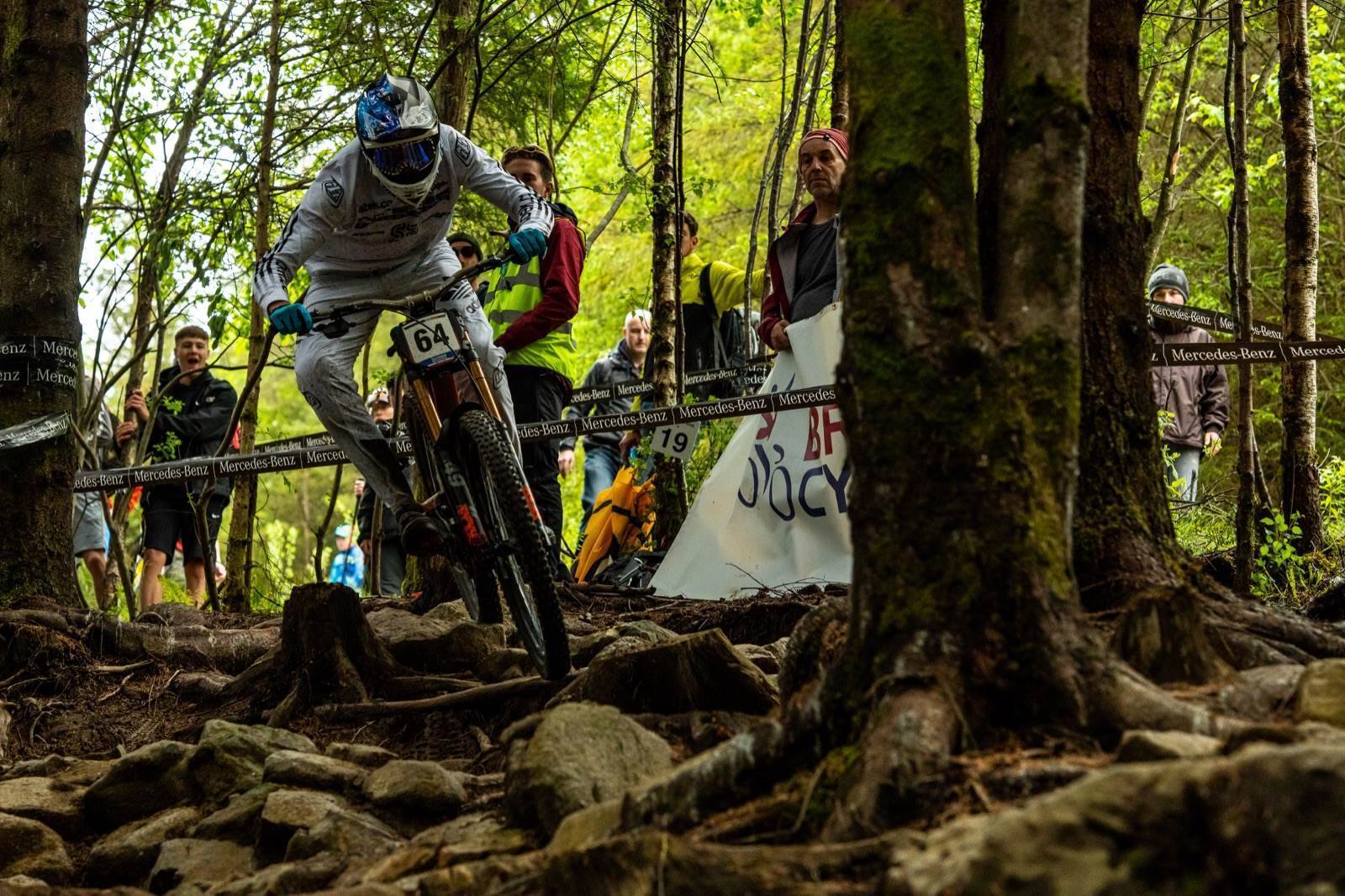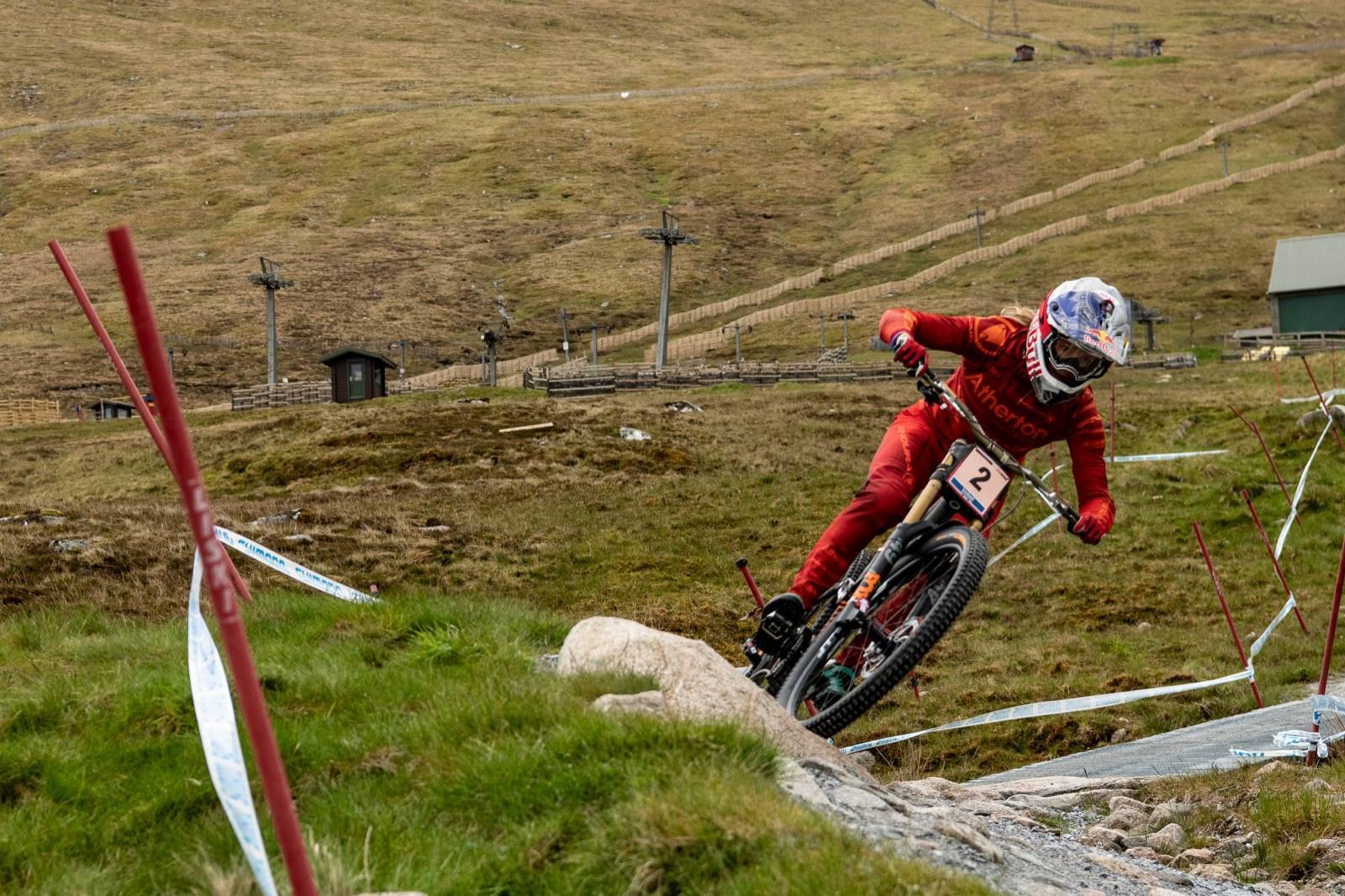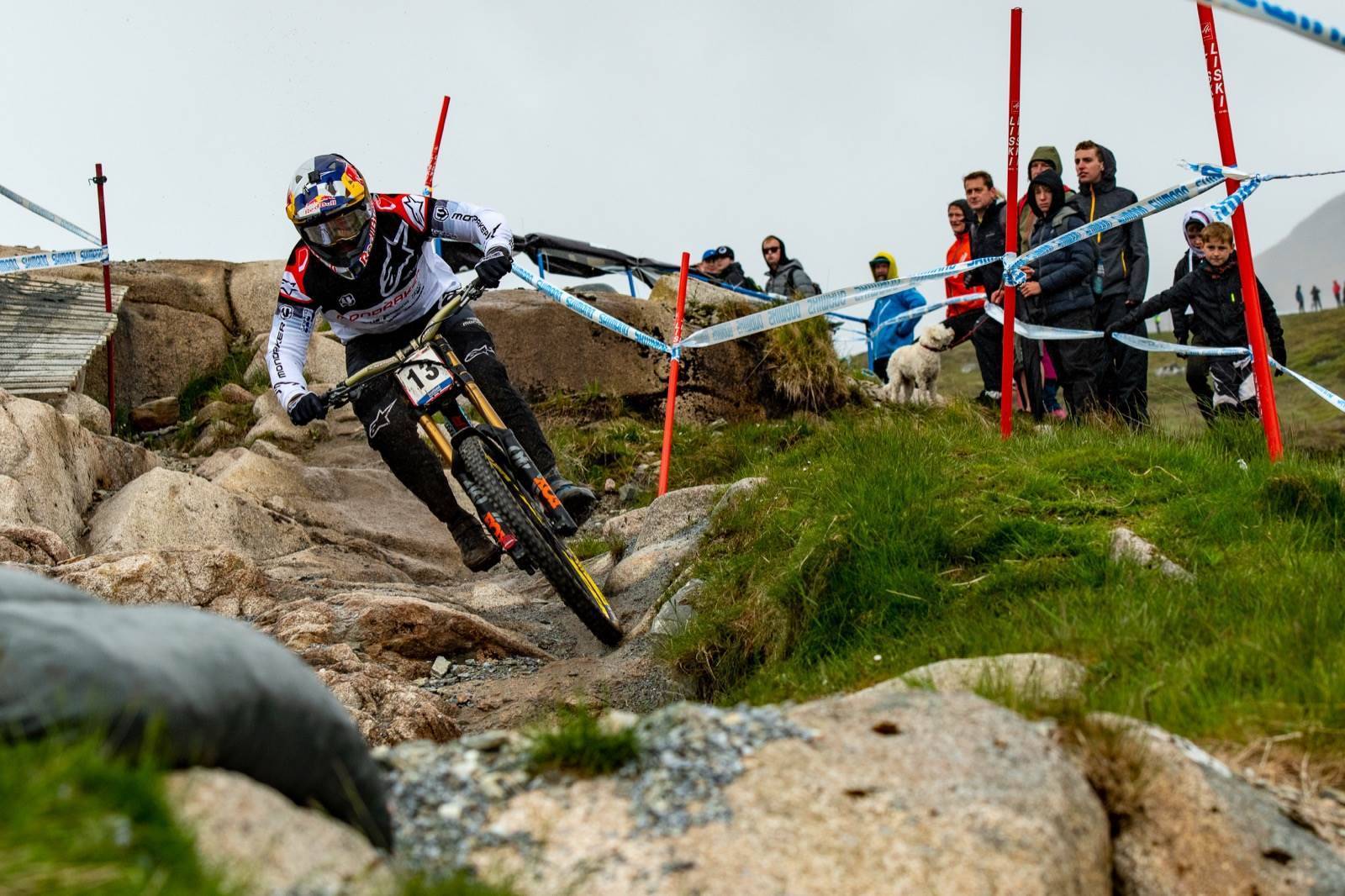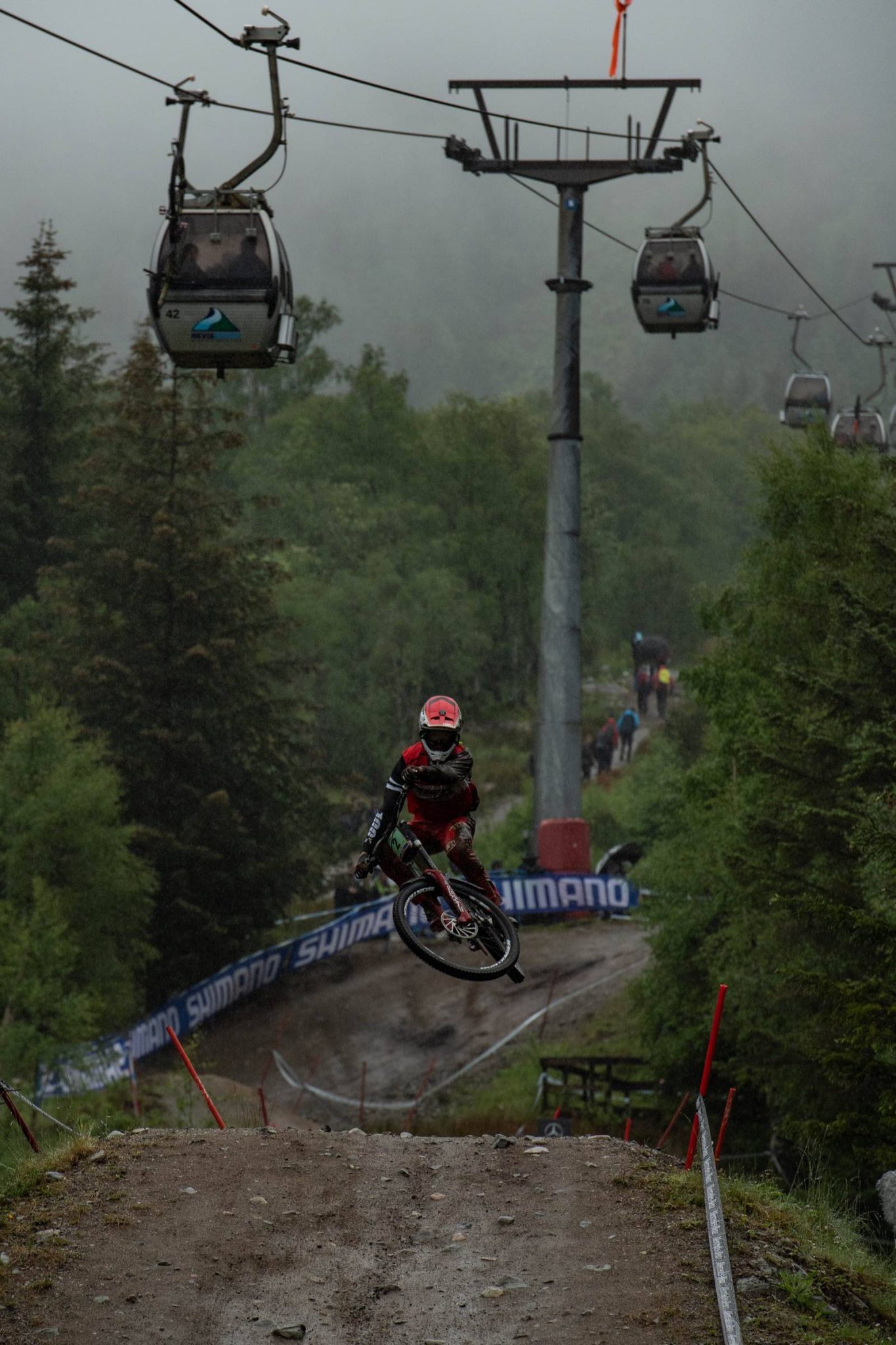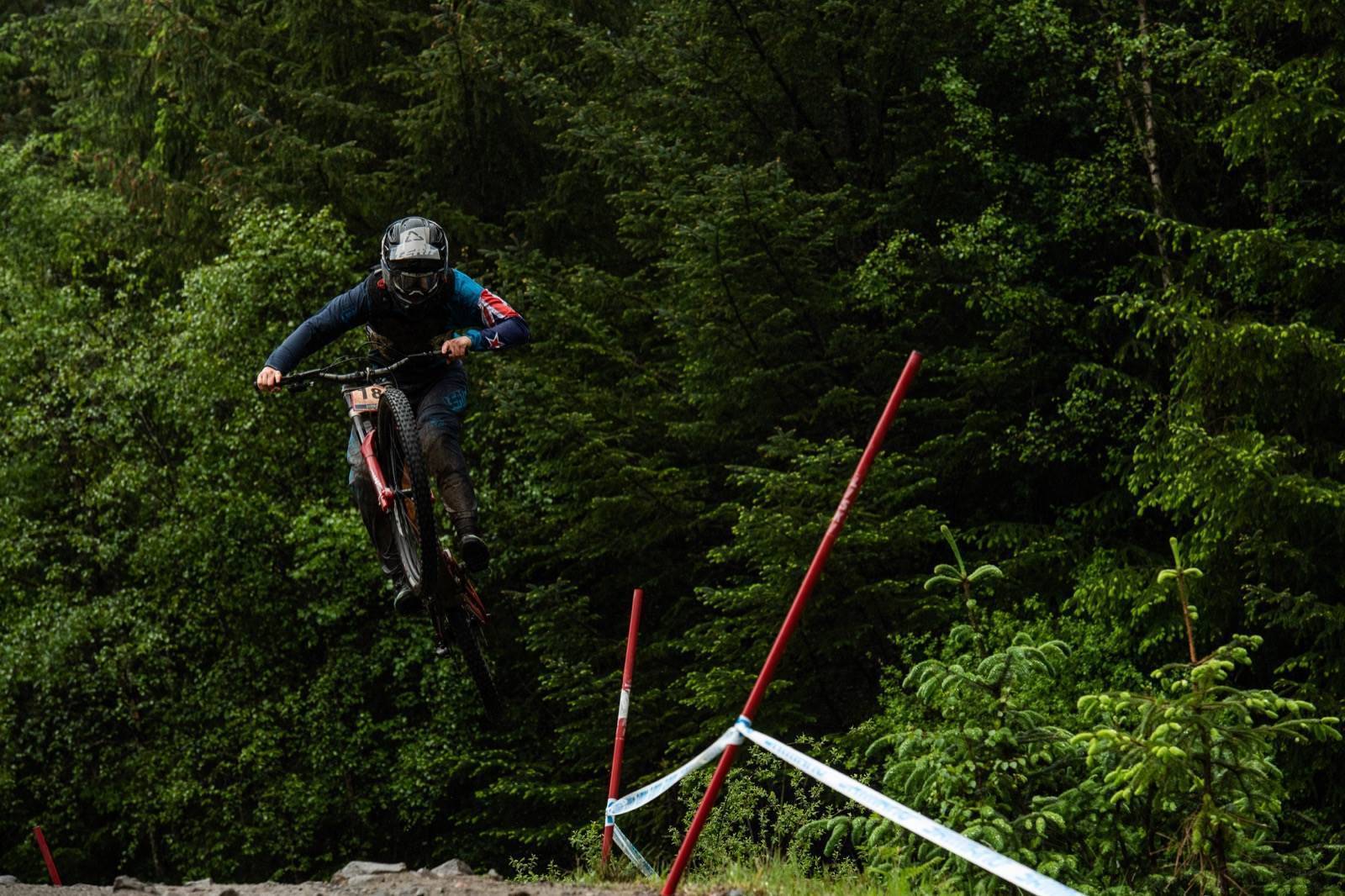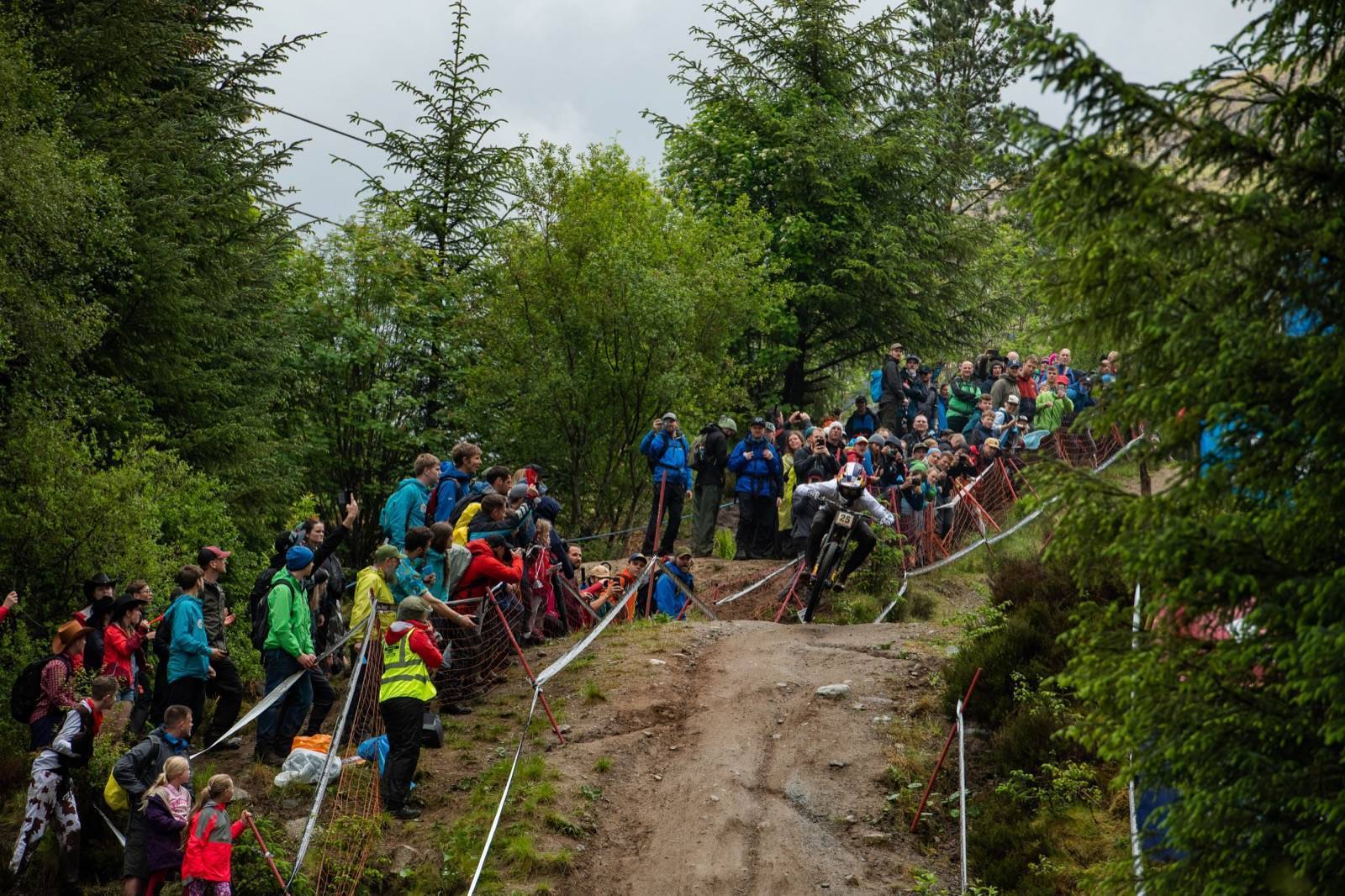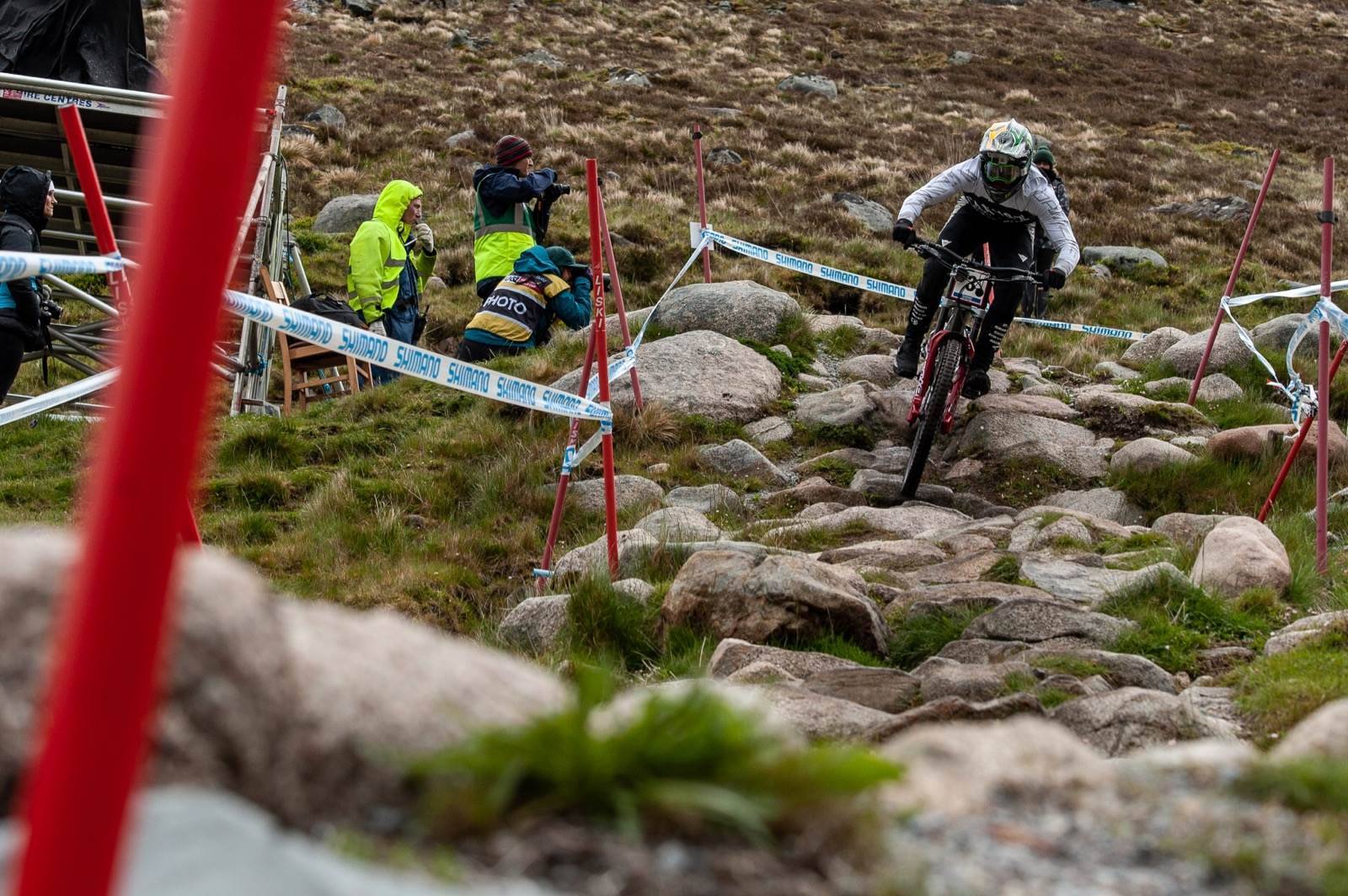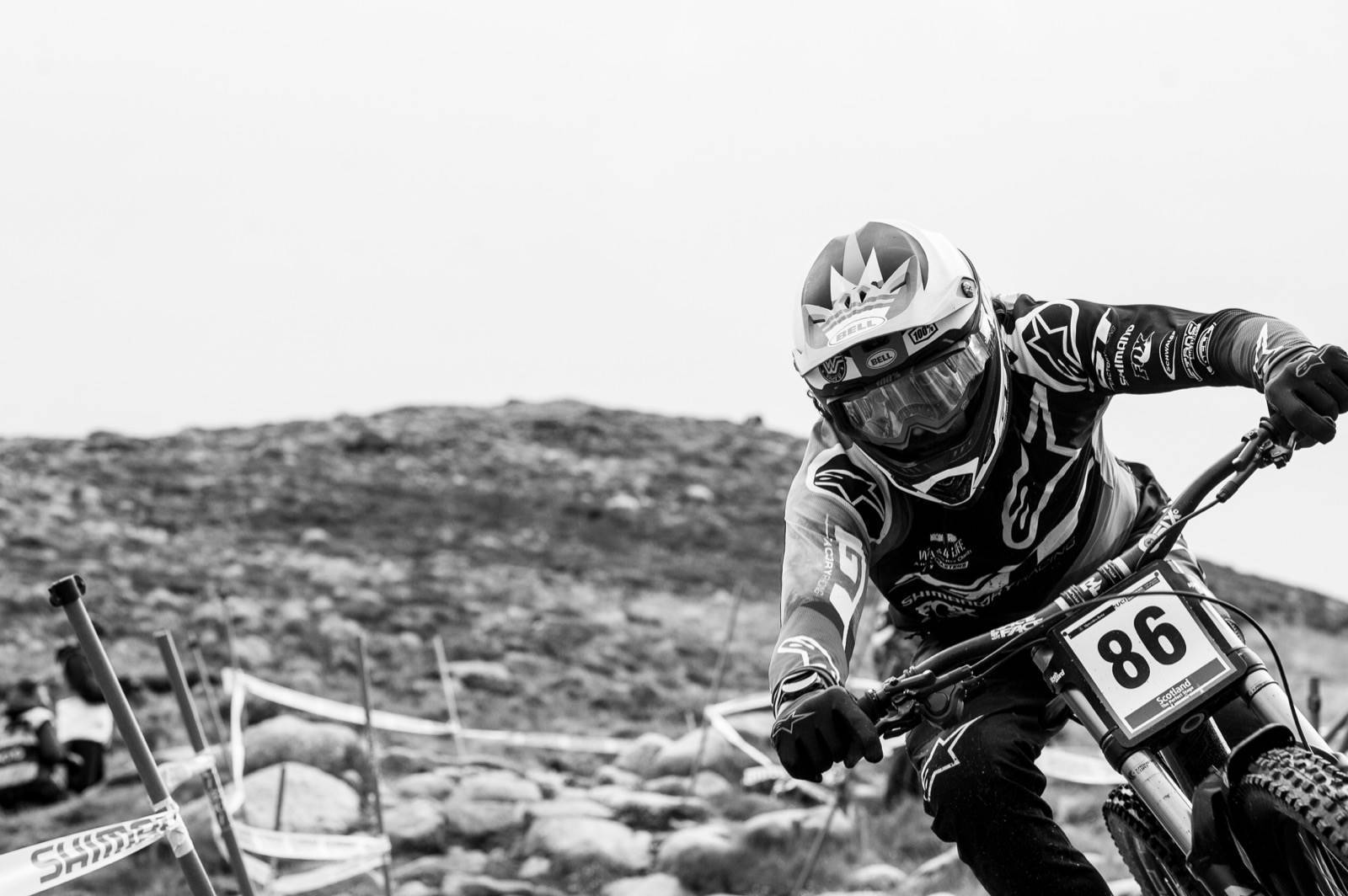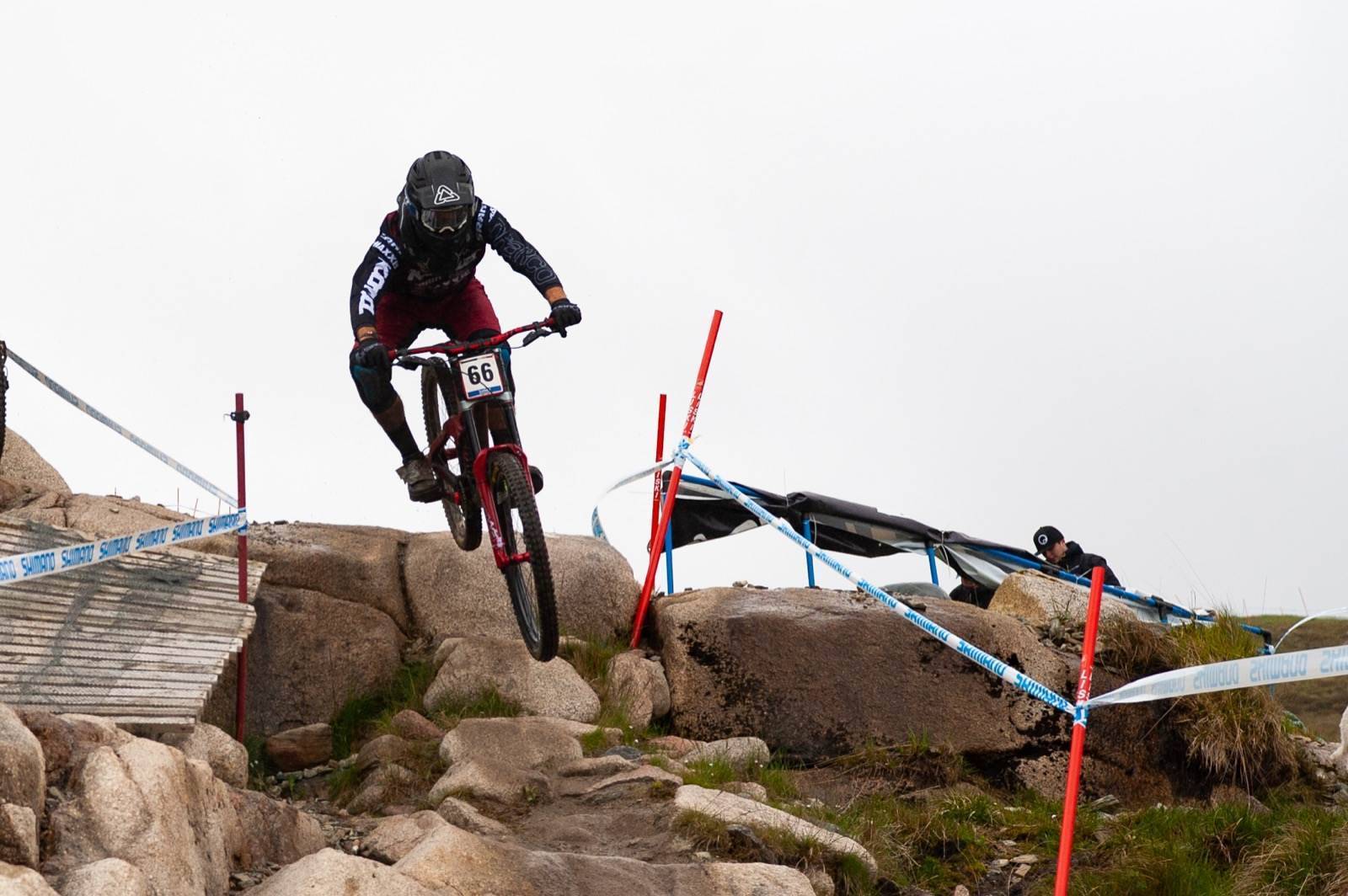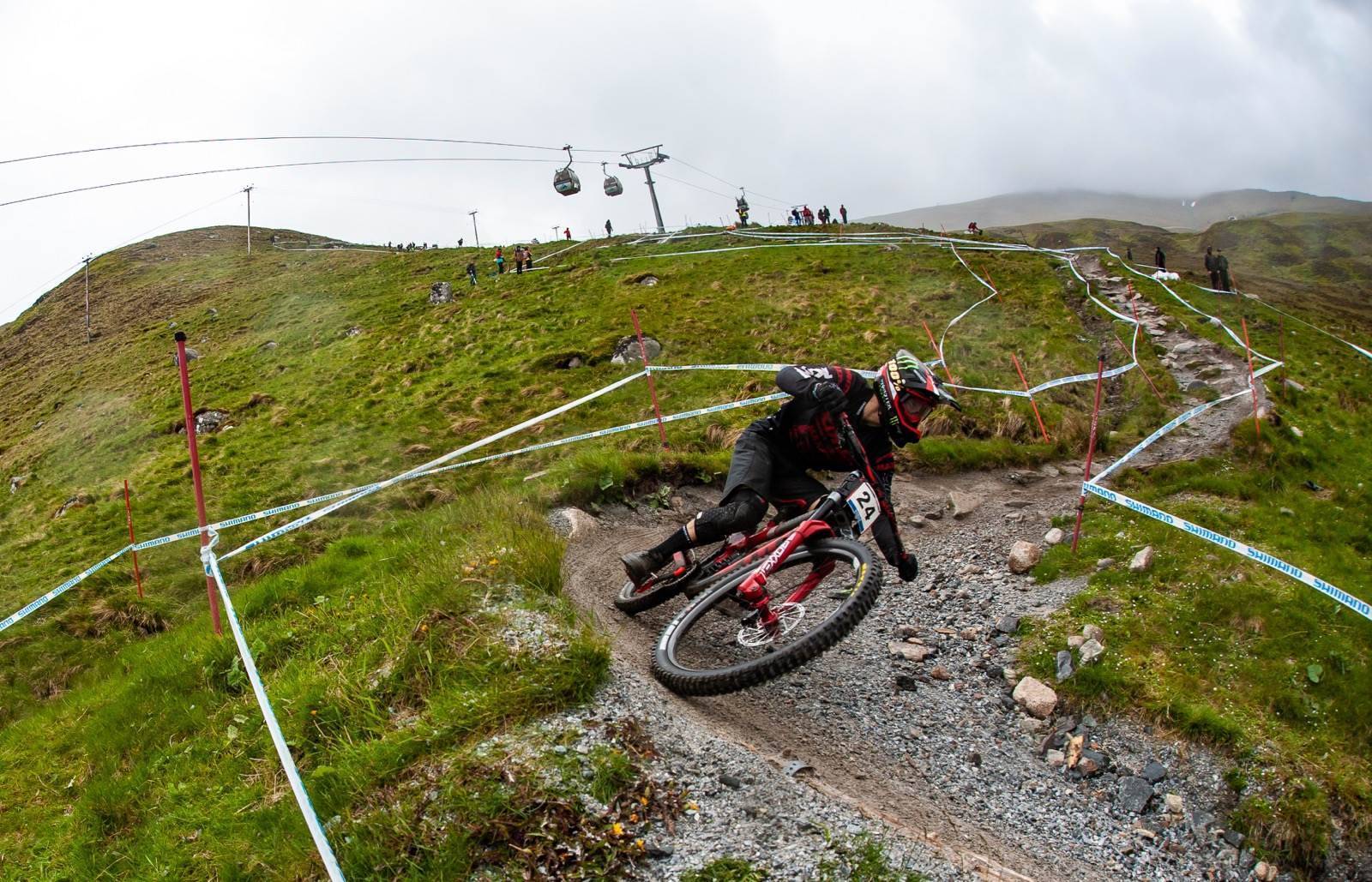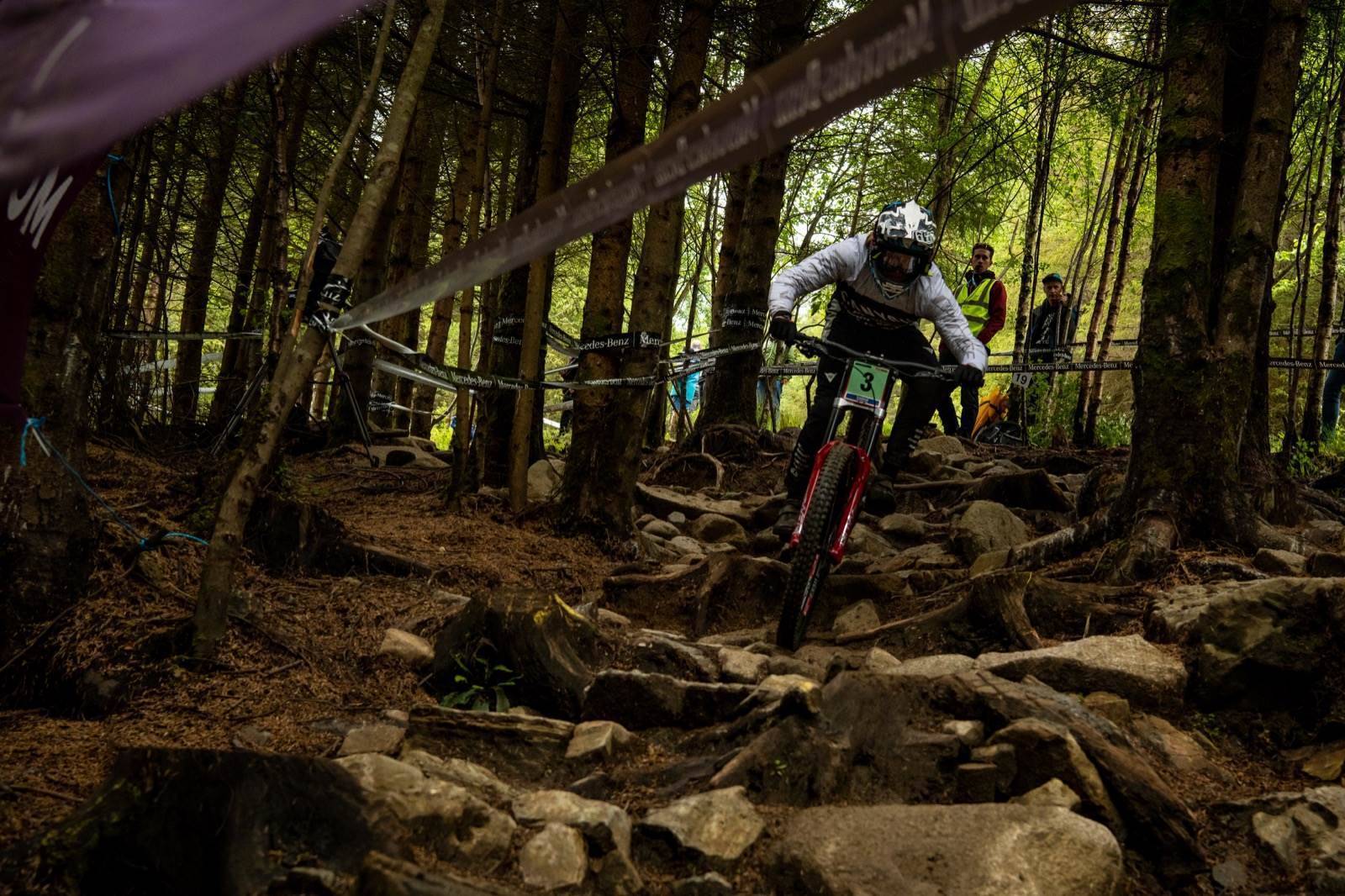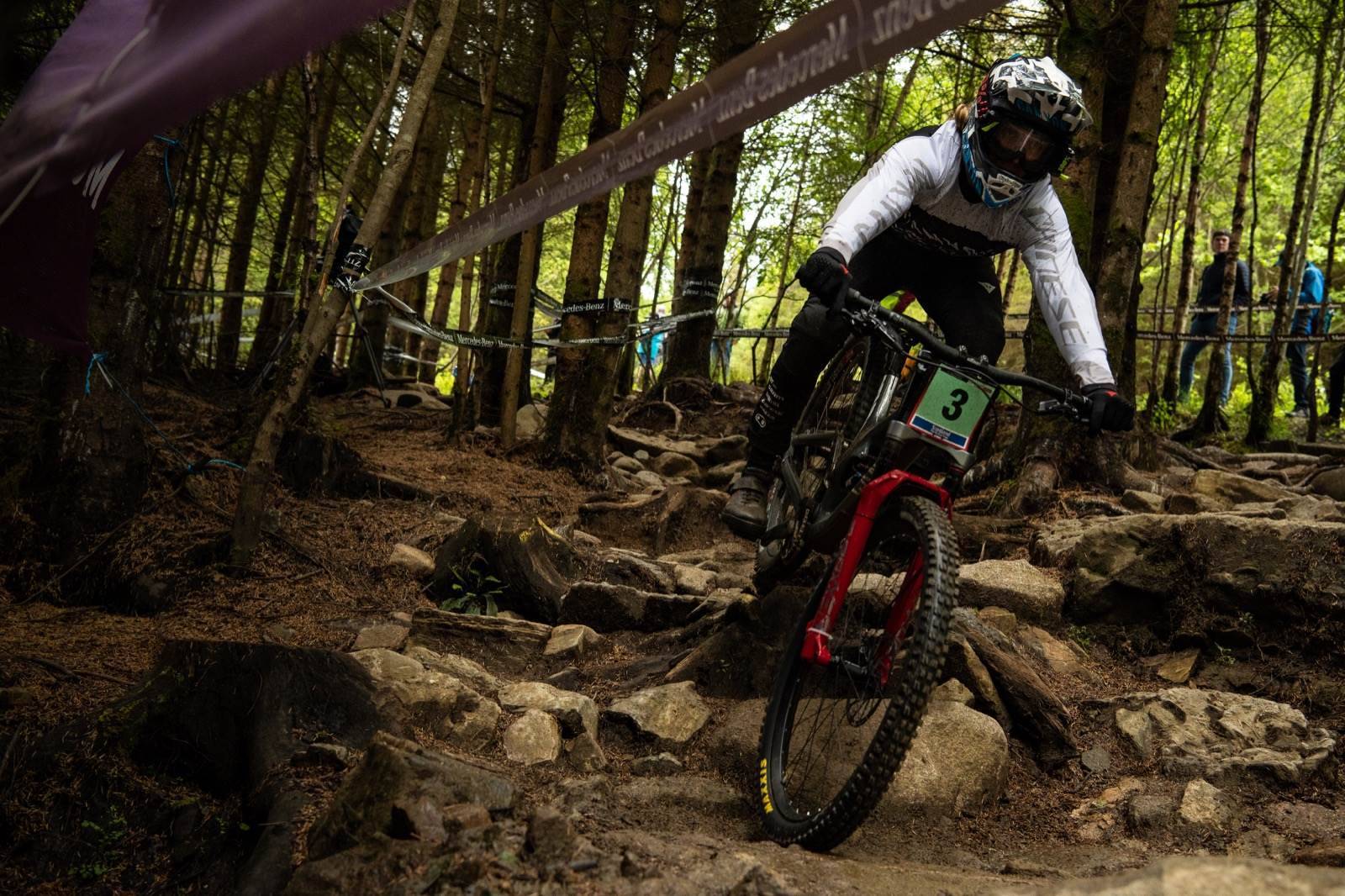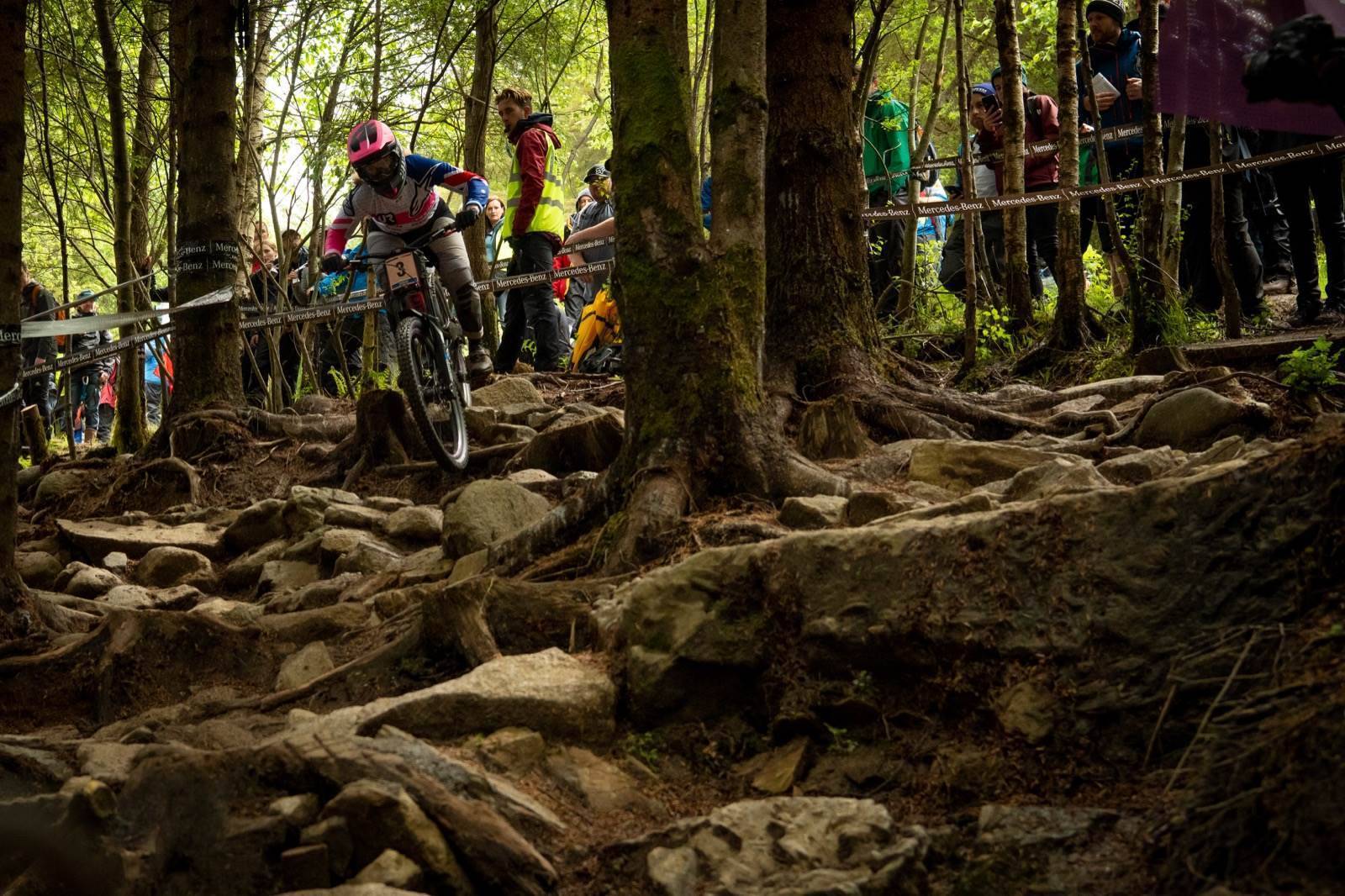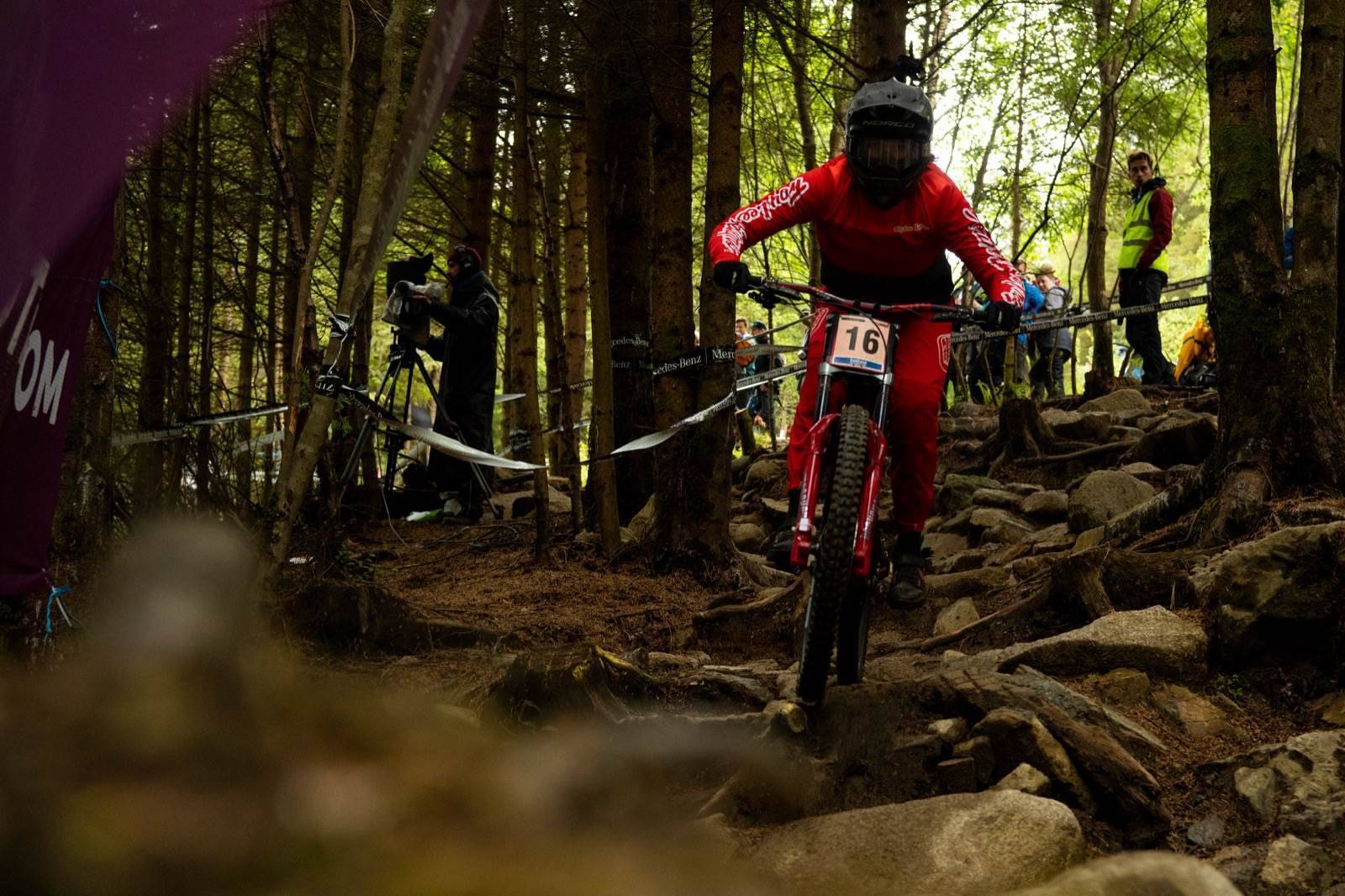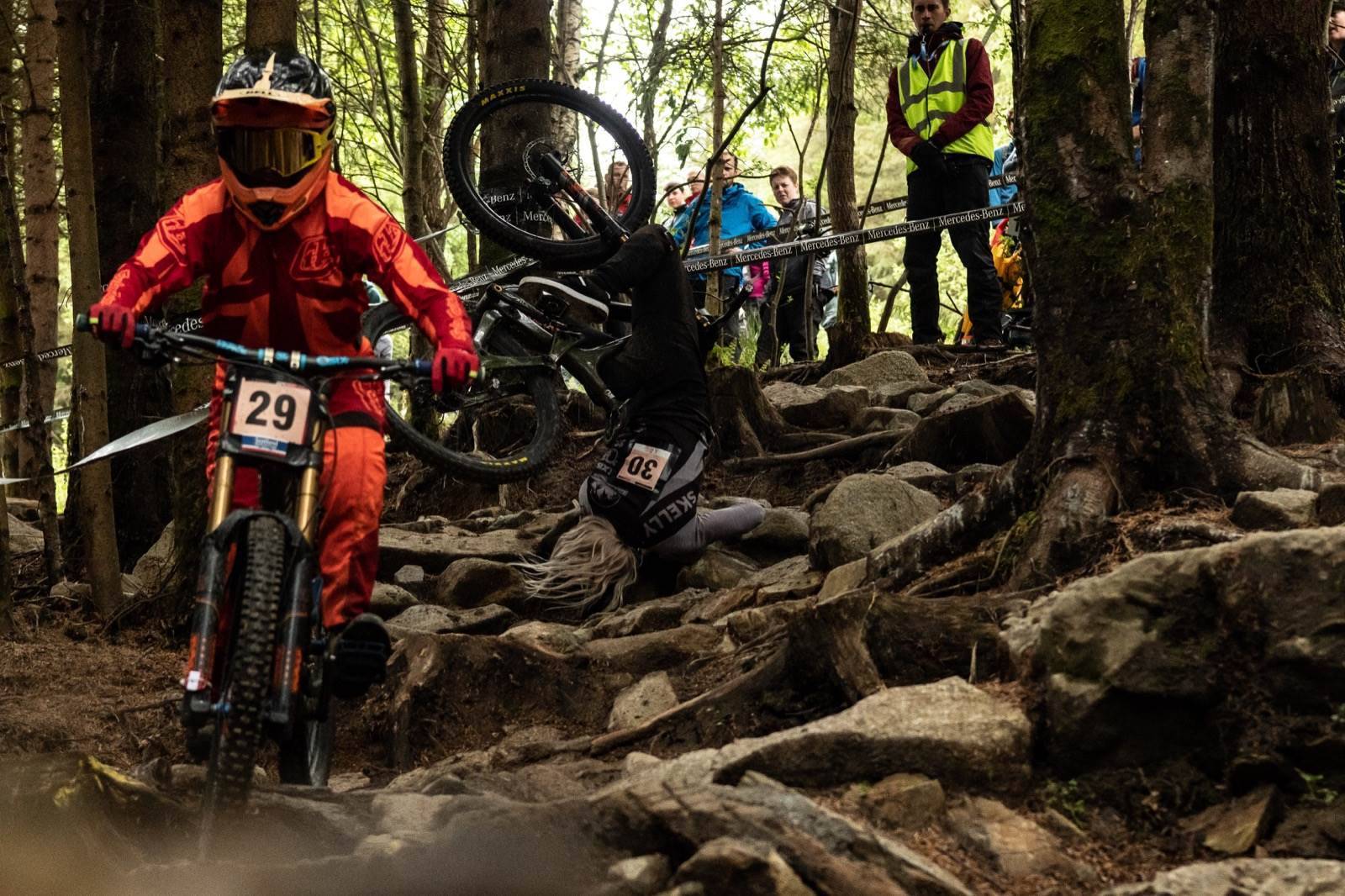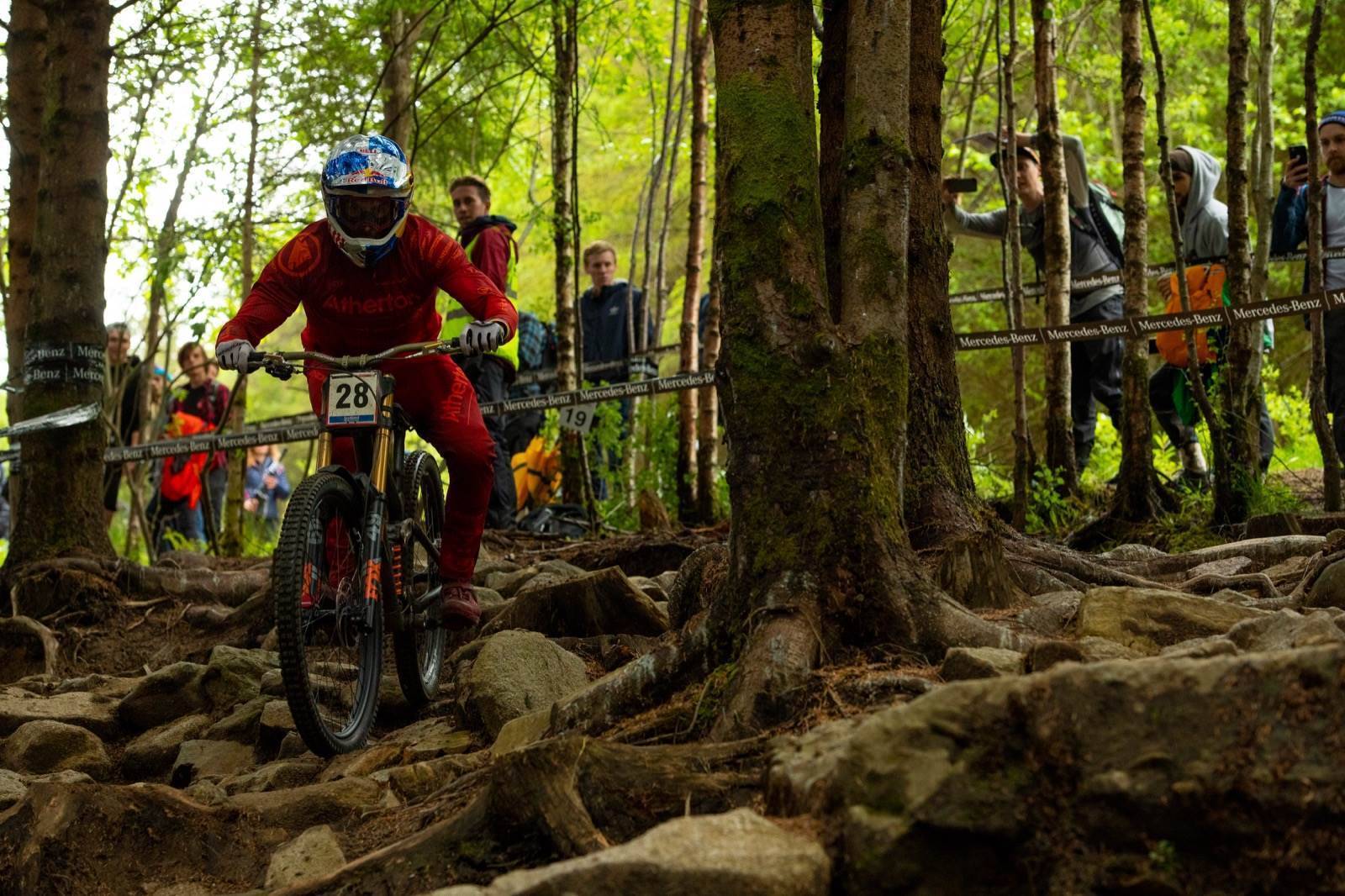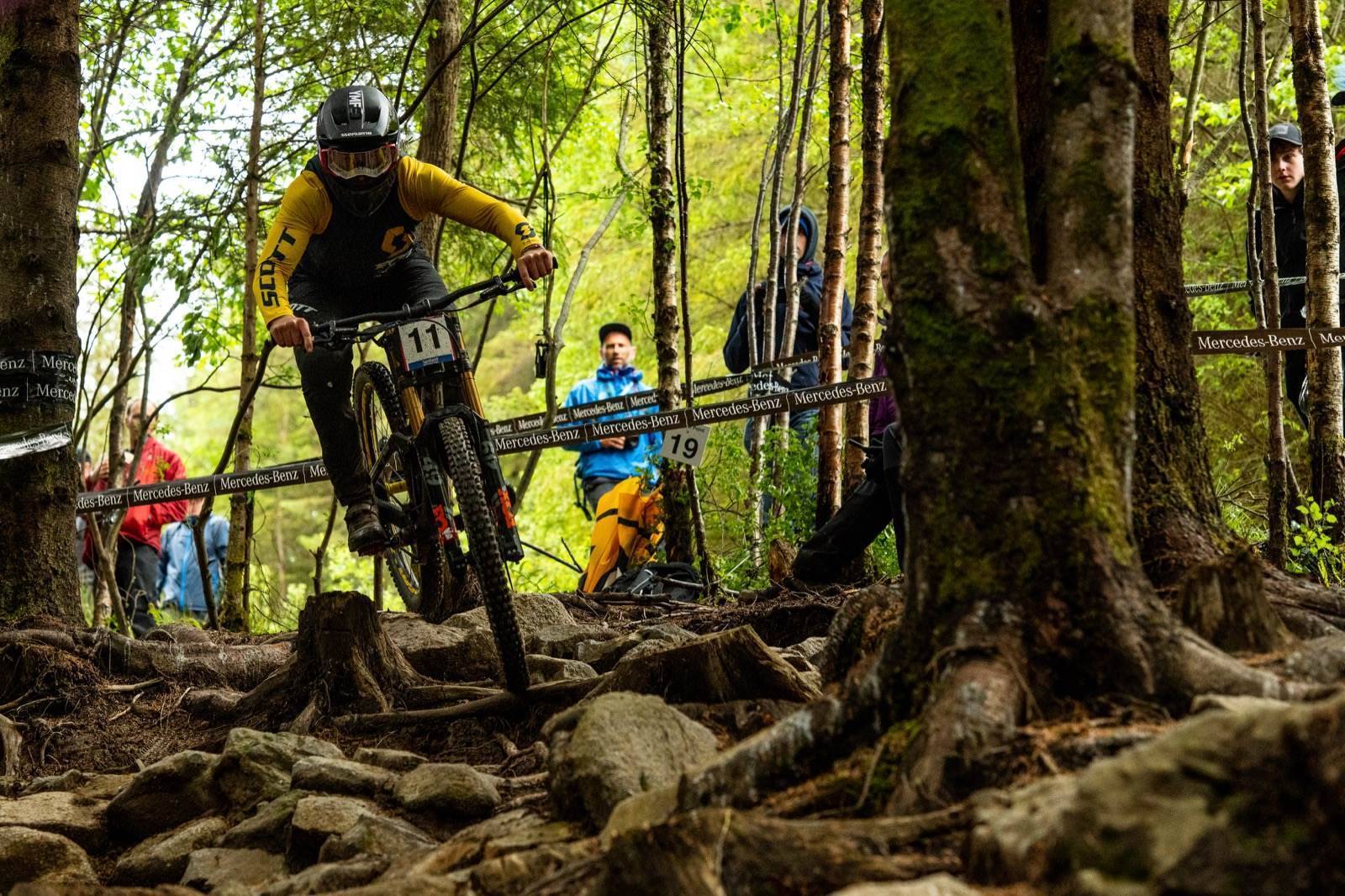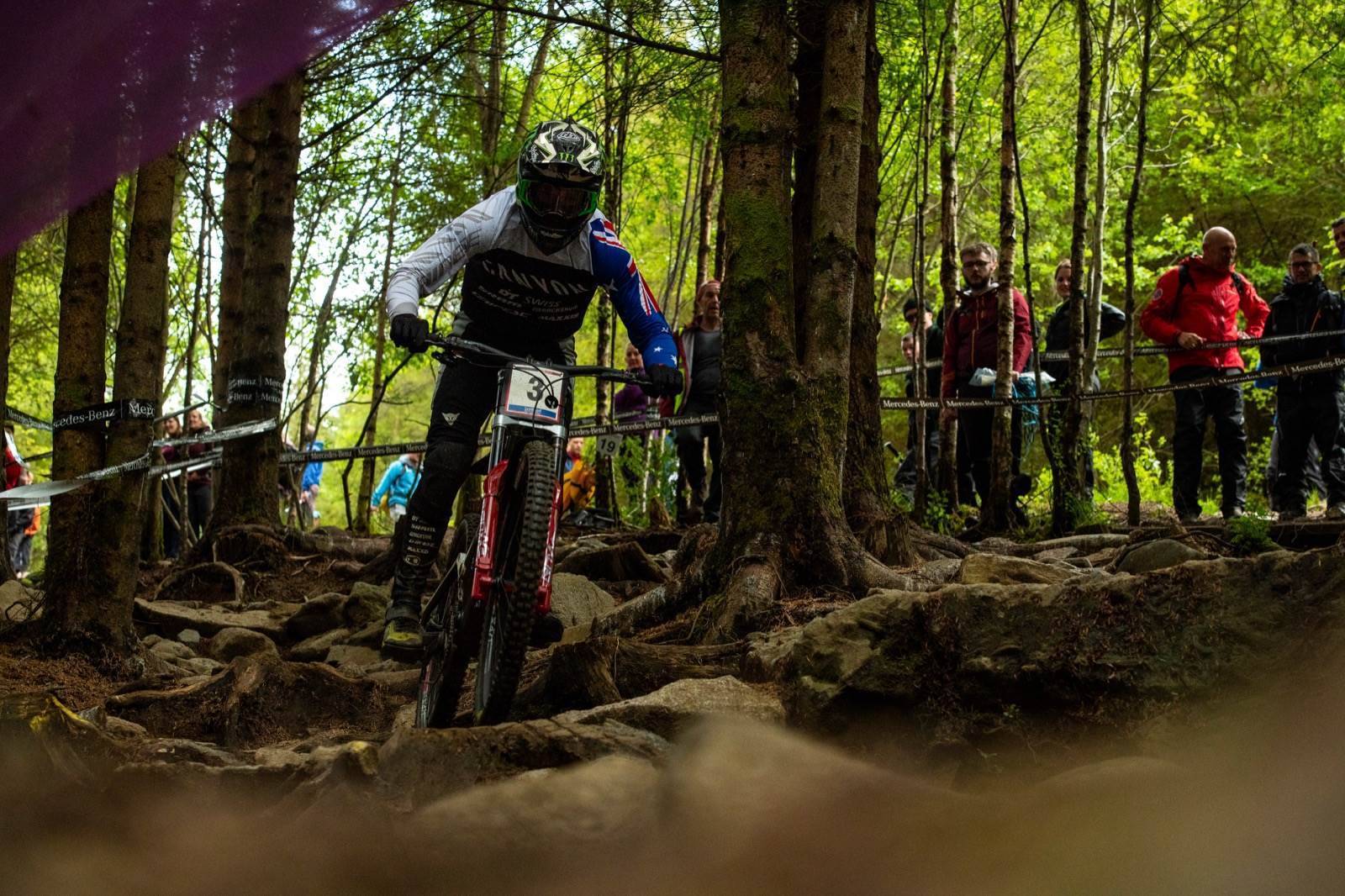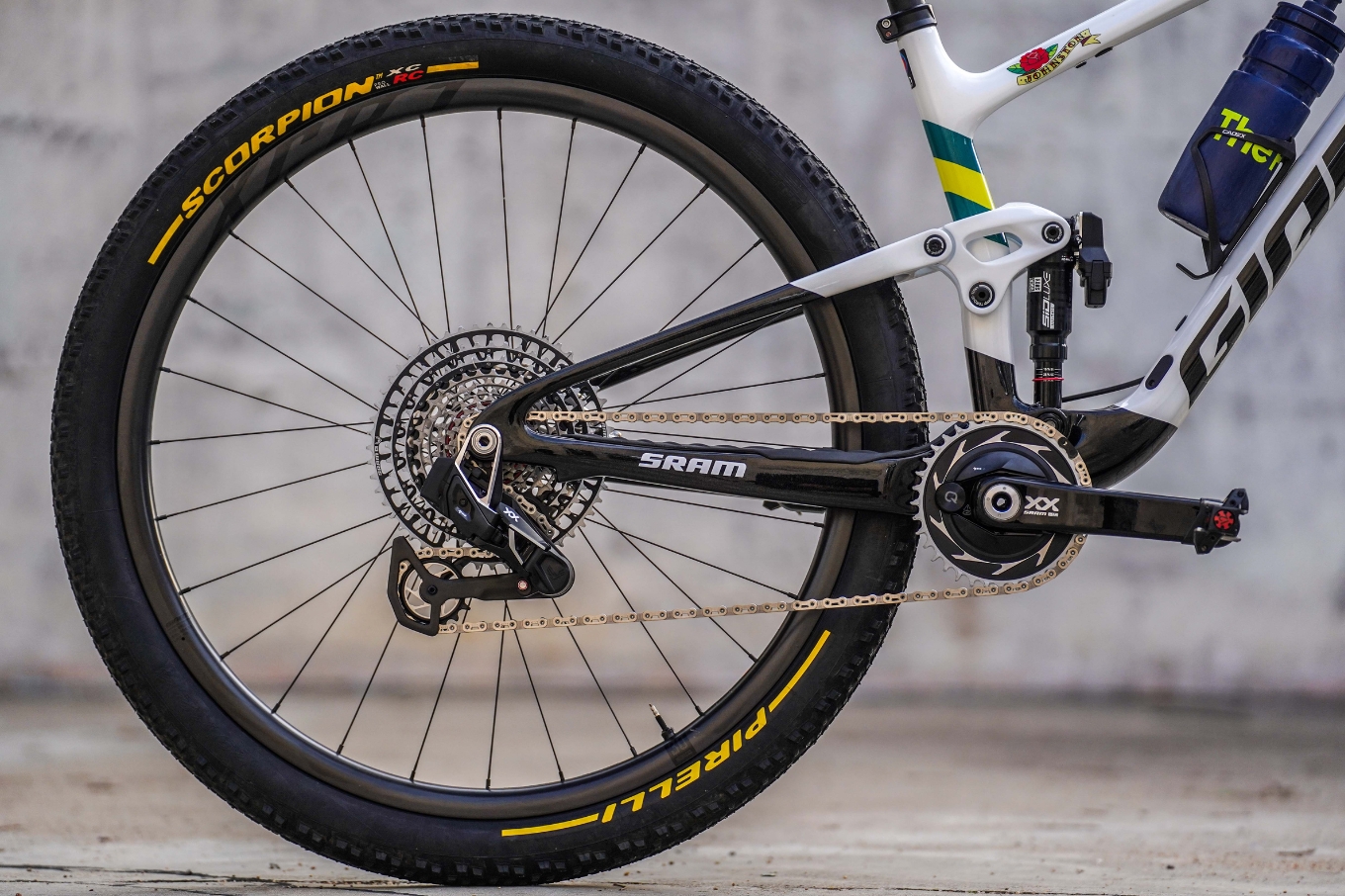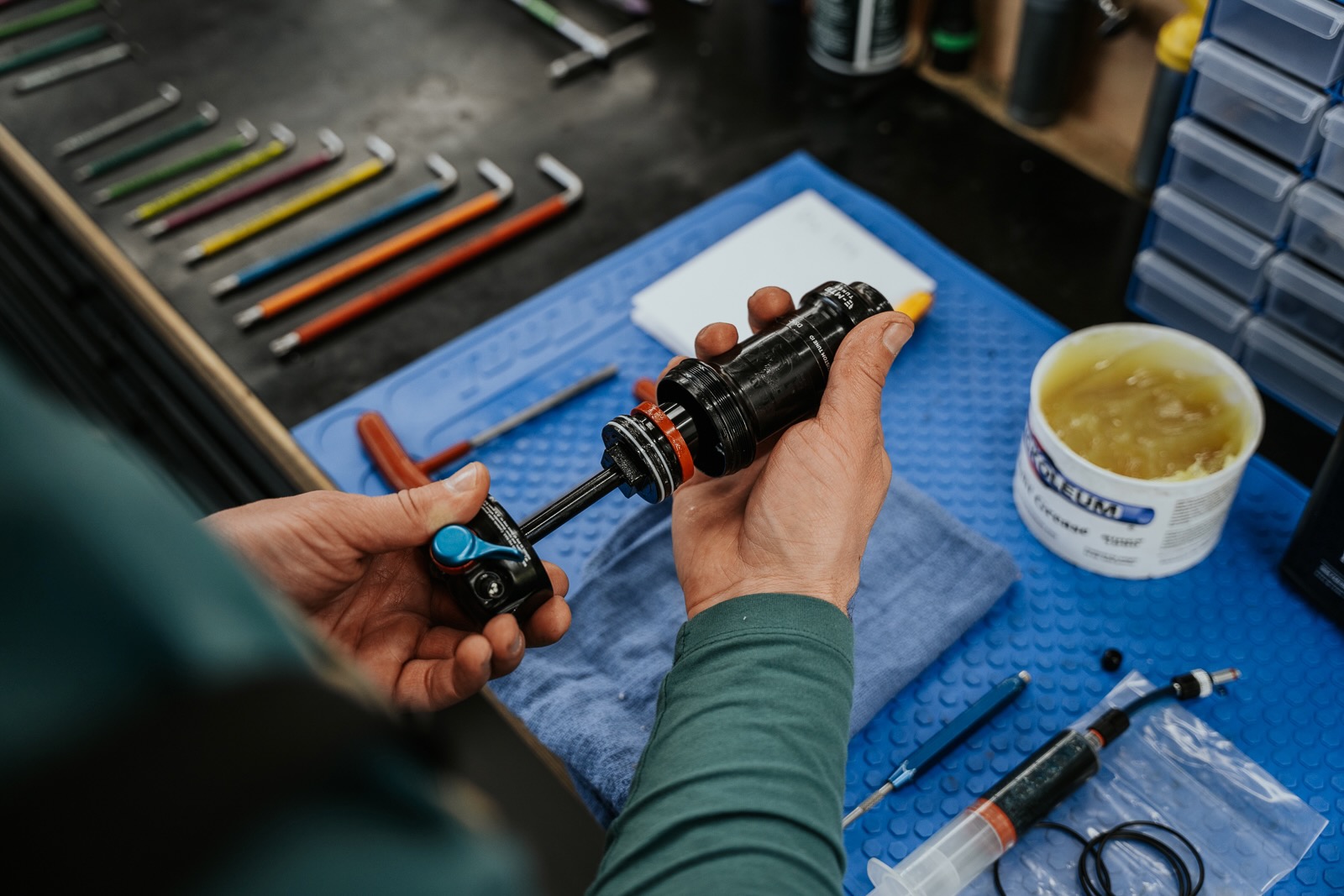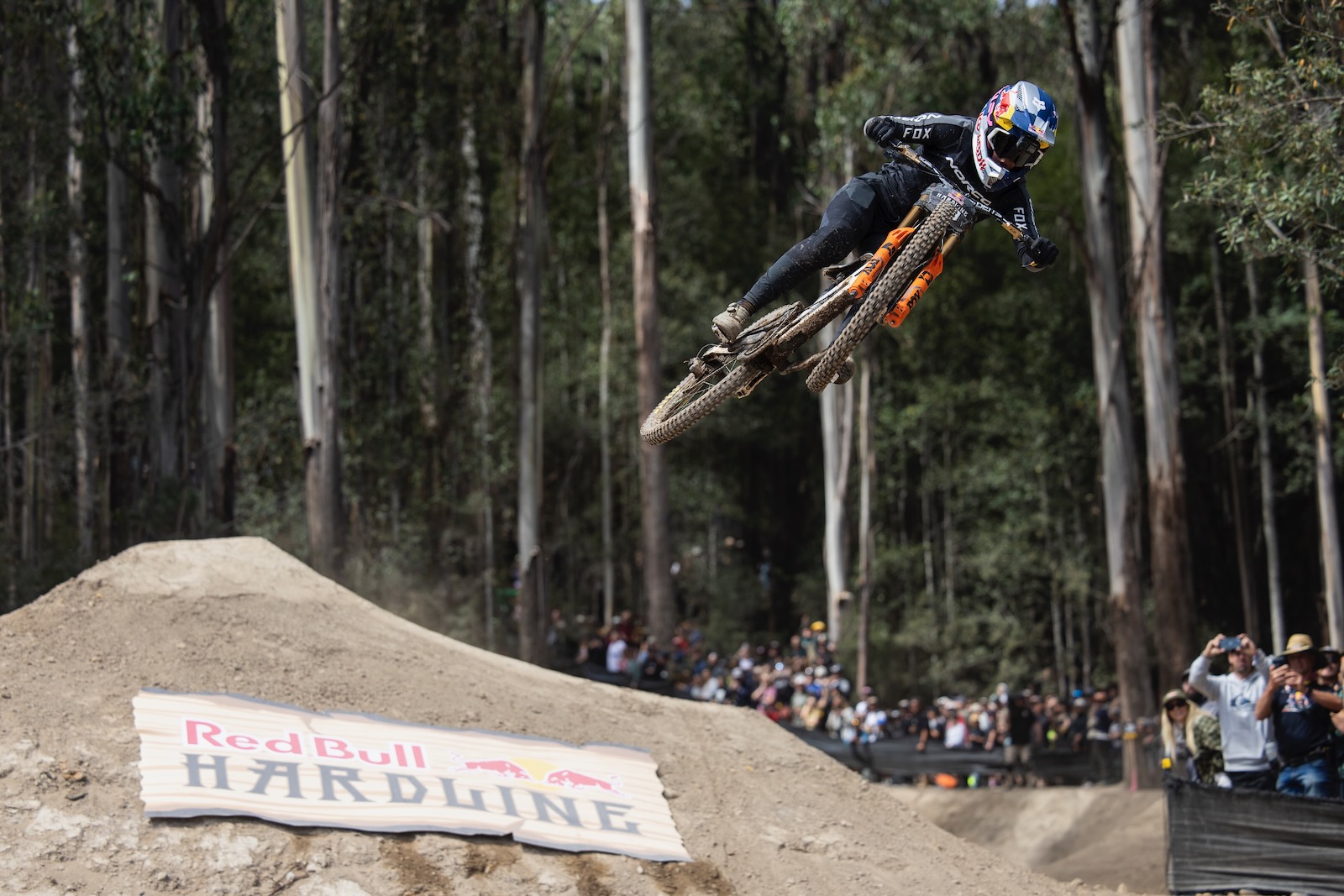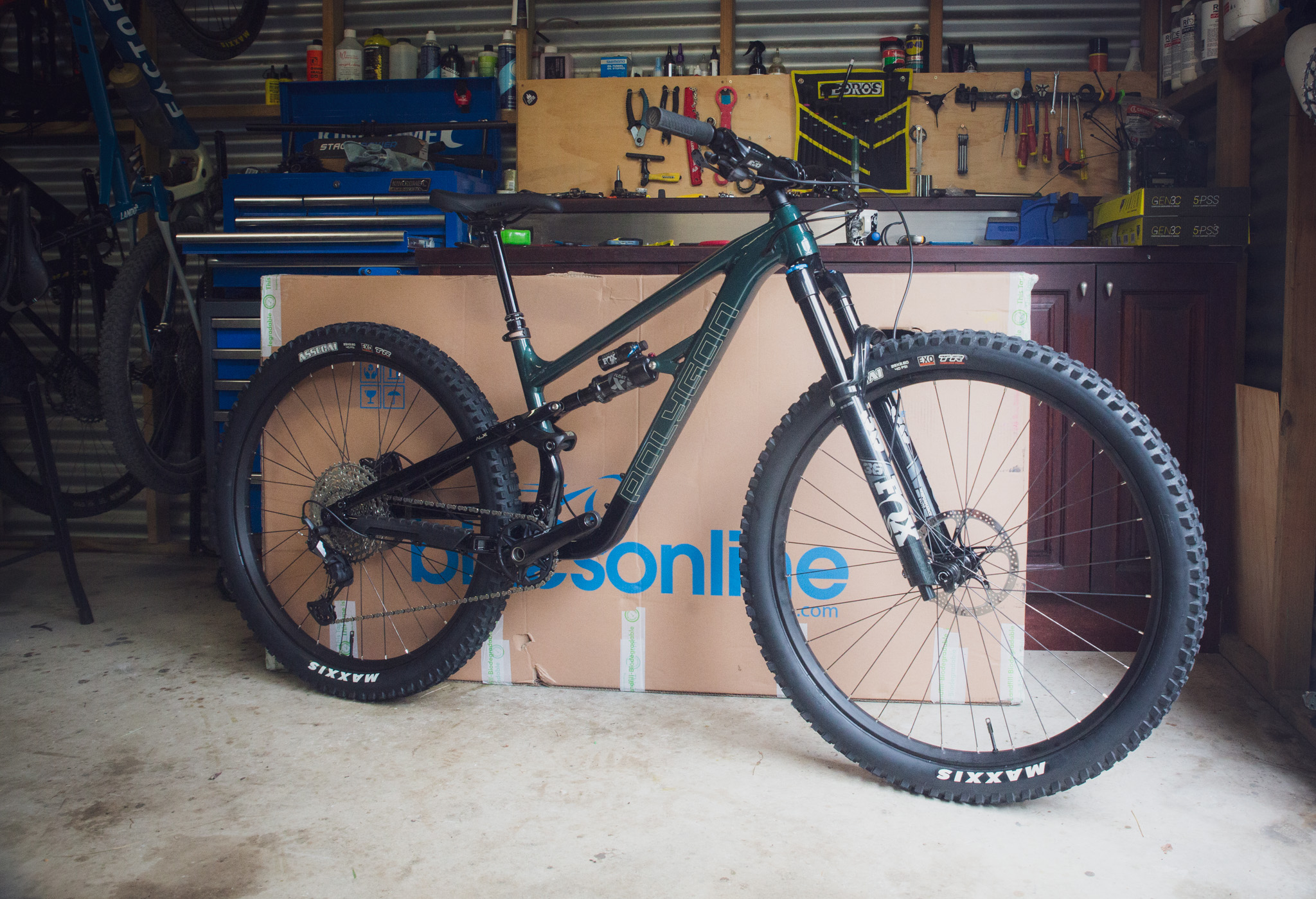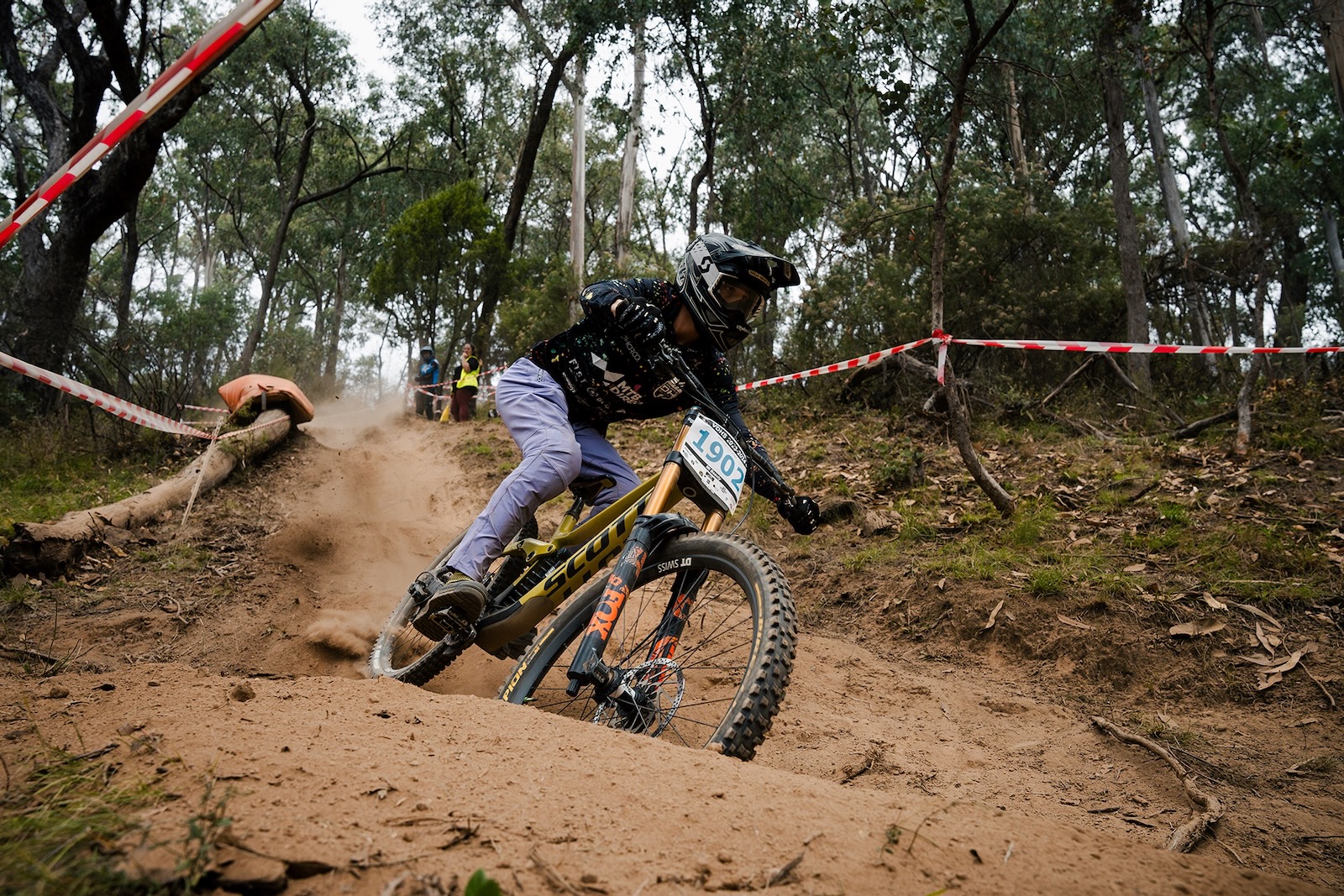Caught in a storm - Fort William WC
Delve into the story behind the Aussies racing the Fort William DH World Cup.
Words and Photos: Robert Conroy
Fort William has cemented itself in the lore of the Downhill World Cup of mountain biking, appearing no less than seventeen consecutive times in the race calendar since 2002. This, you already know but sponsors change as do riders and yet Fort William holds its place. Why is that?
Lay of the land
Aonach Mor is a treacherous place, this slightly smaller mountain is nestled on the back side of Ben Nevis (Ben being the designation for mountain) the biggest in Scotland. When you arrive – from the far carpark to the event village, the track gradually rises up in front of you like a wall. Partially hidden in mist, the course weaves down the face of the mountain, dropping out of the clouds.
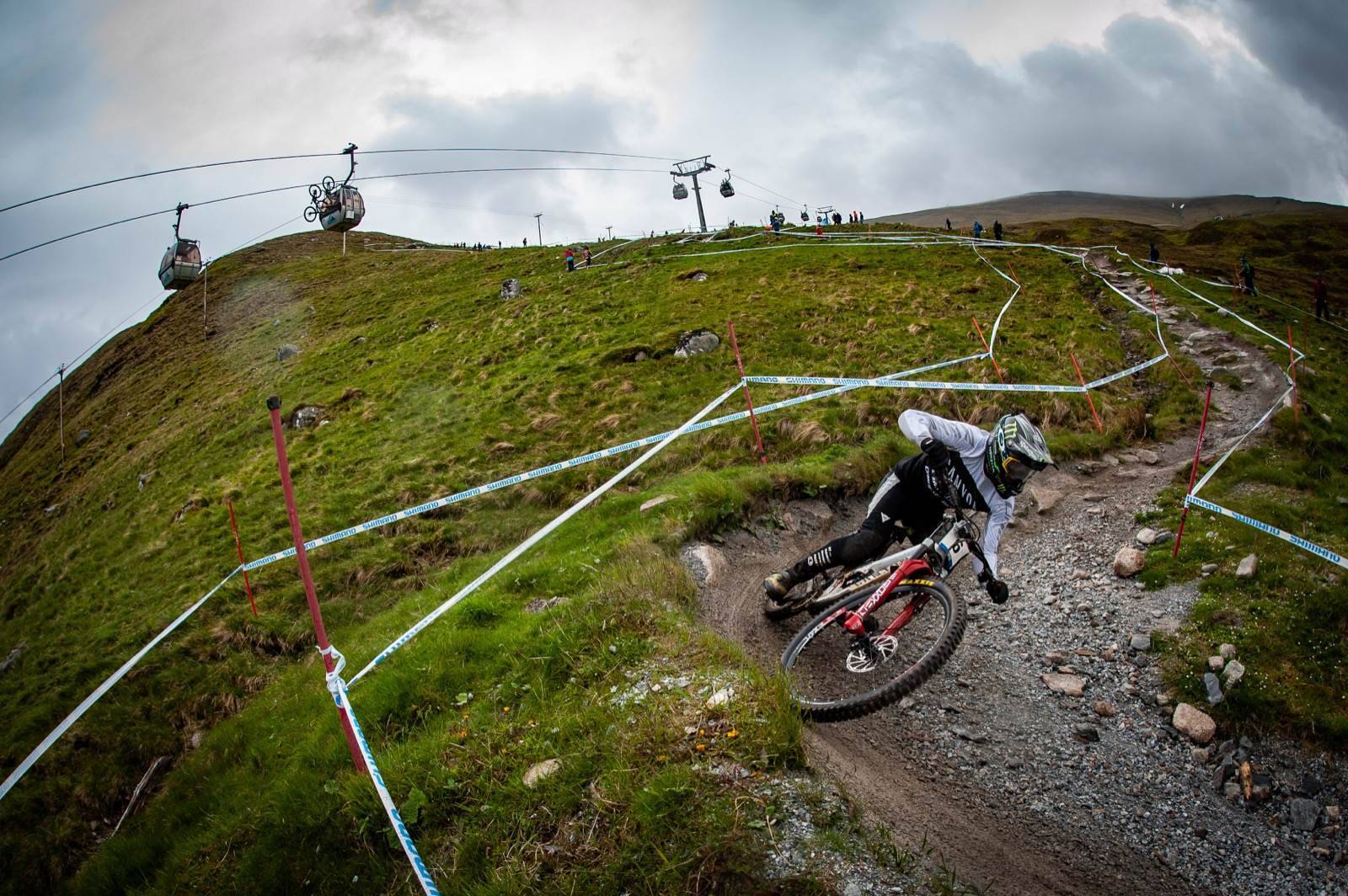
This legendary rugged white line stands in stark contrast to the green marsh that surrounds it. As you approach the scenery changes, and before long you’re walking amongst pine. Then the trail itself disappears from your view and you’re left standing in a gravel carpark looking up at one of the most famous finishing straights in the world – the Scottish Tourism hip jump, its lander seems a hundred foot above your head. You’ve arrived at the Fort William Downhill World Cup, where the best mountain bikers in the world congregate once a year.
What is a Munro?
A munro is any mountain or peak above 3000 feet high. Ben Nevis is 4,409ft Aonach Mor comes in at 4,005ft. Steep!
The event village is buzzing, despite the heavy rain of the Friday, there are a large number of spectators because after all this venue has a reputation. The fans are loud, they know how to barrack and it’s a presence that is felt all the way up and down the hill.
Athlete’s eyes and minds however are fixed solely on the track and much like the aforementioned fans it comes with a reputation. Fort William has been a track on the limit since its inception. To understate, it’s a difficult trail. The top is open, exposed and littered with granite slabs. Rock steps, committed jumps and slippery (no matter the conditions) corners. As Jack Moir pointed out, ‘depending on the day, which way the wind blows.’ The bottom woods is like a flipped coin. Sheltered, at least in appearance, it is no safer than the exposed upper slopes. Rooted, sometimes slower and far more oppressive on the body particularly in the wet.
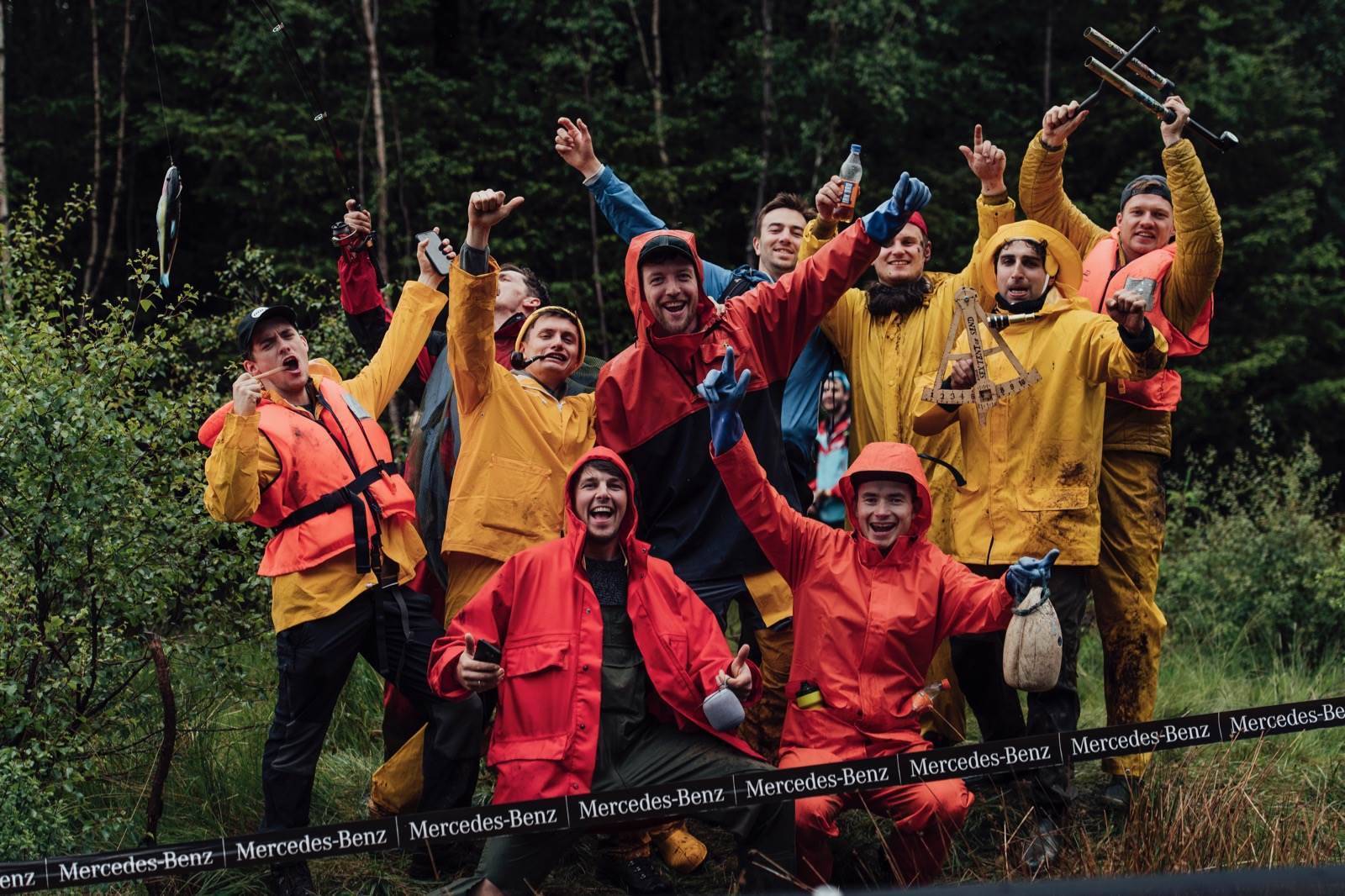
Despite its limited line choice it’s still one of the most divisive races on the calendar and Australians seem to do particularly well here.
The Aussies Angle
Australians have been making the journey to this far mountain for years. My theory going into the weekend was that after delving into Australian results on ‘Roots and Rain’ that Fort William was one of the best places for a young privateer to make their mark. That dogged determination coupled with some iconic Australian tracks to train on, like Thredbo’s Cannonball run, combine to make it the perfect race to start a career. Whilst those I asked didn’t necessarily disagree with the notion, they did offer background further than a results sheet could show.
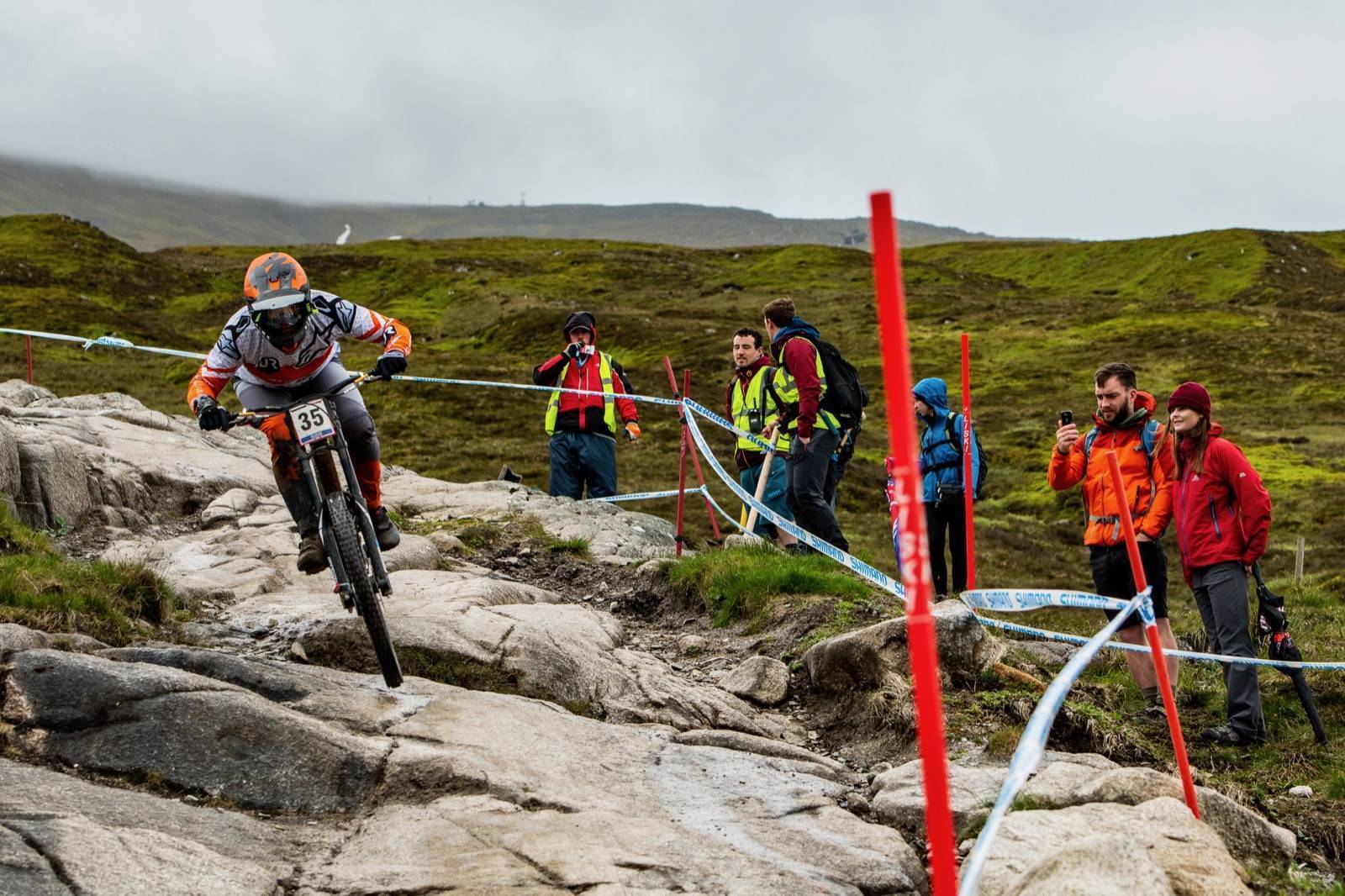
Always early on in the World cup Calendar, Scott Factory rider Dean Lucas put it down to “the fact there were four races in five weeks and being a privateer this made it a lot cheaper to go from race to race and not needing to find a place to base myself out of.”
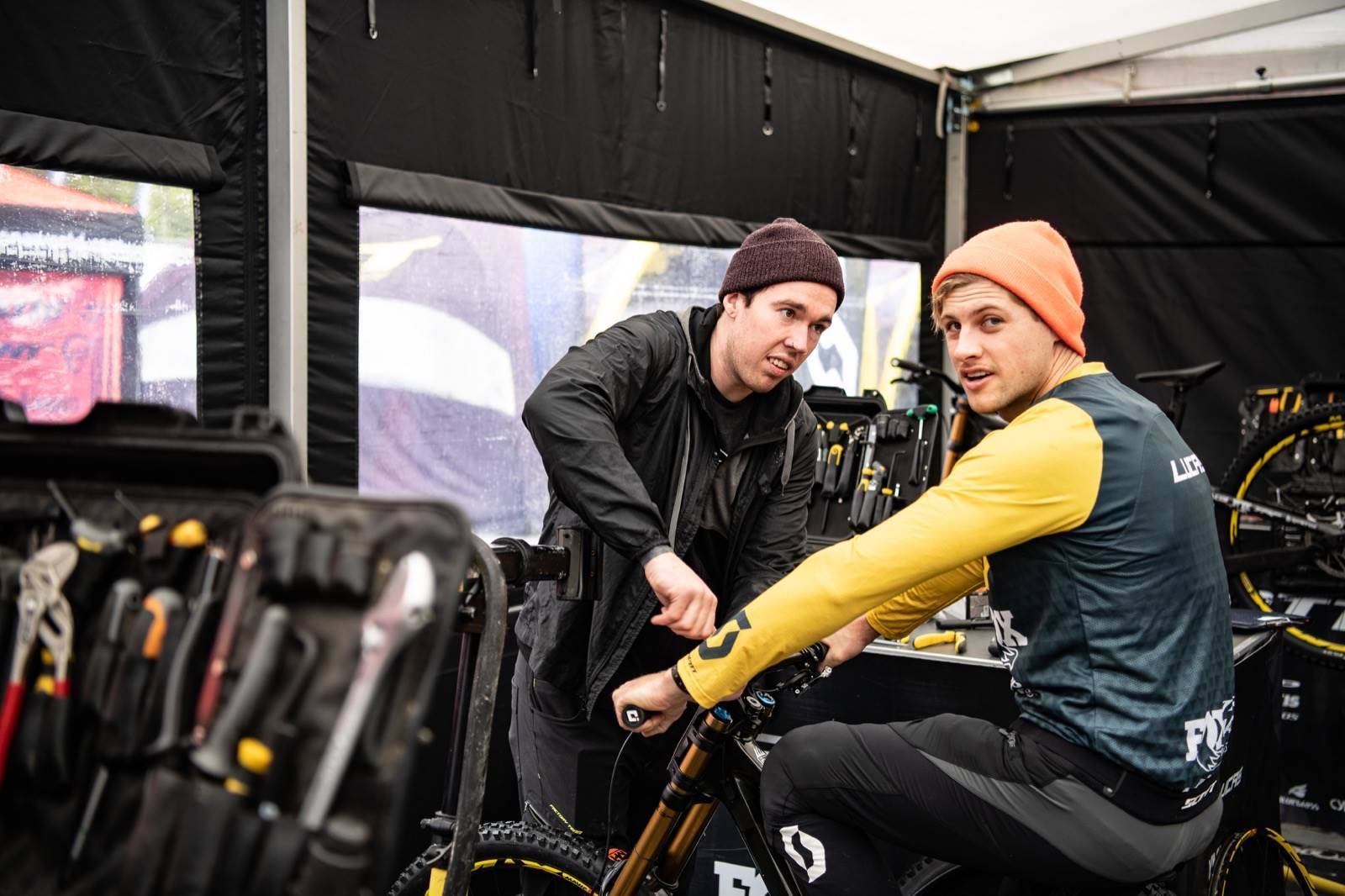
Catching up with new privateer, Western Australia’s Jake Byrne, he mirrored this thought. “I chose these string of races as it seemed like a great way to do plenty of racing in a single Euro trip.” And to make it even simpler, “I started in the UK as it is a good spot to buy a van and get set”.
That said, Fort William is a crucial piece on the road in learning to become a World Cup racer. As a privateer Byrne understands, “Fort William is brutal, tough on bikes and bodies. If an Aussie can prove themselves at the Fort it’s pretty impressive! Although I see any World Cup in any country, on any track, just as important. You’re still up against the world’s best. That never changes.”
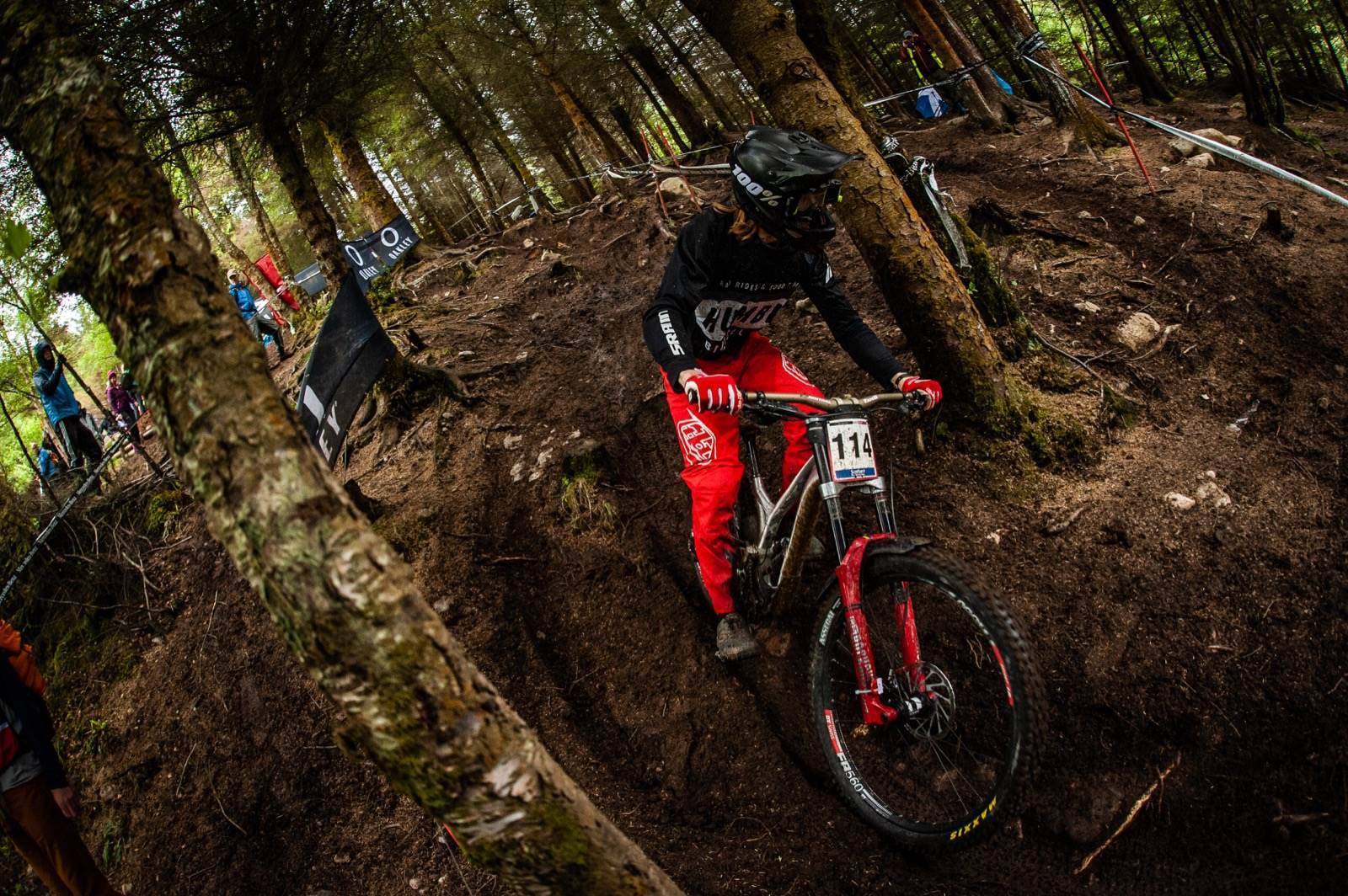
Previous podium finisher Intense Factory rider Jack Moir mirrored these thoughts, “Well I think the Aussies have just as much success on other tracks on the circuit as they do here. But if you had to put it down to something, maybe it’s because we have Thredbo. Which is sort of like the Fort, just a bit smoother and shorter, so that helps a little in preparing for the event.” You know a track is rough when one of Australia’s rougher tracks is considered smooth.
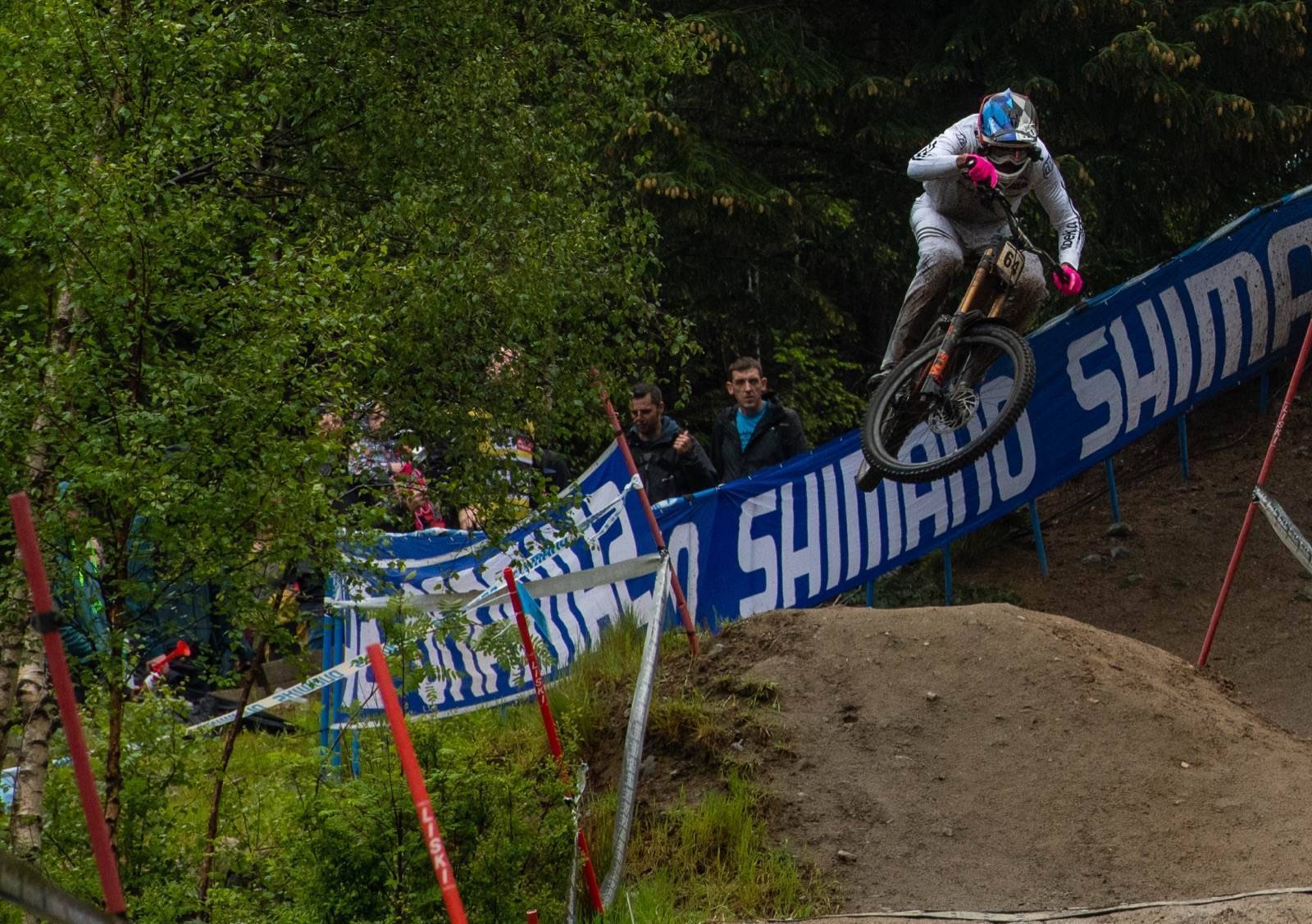
The Race
The incumbent weather doubled the stakes, and double the crashes. Before I had even arrived, Tahnee Seagrave was out with a separated shoulder. Over the Saturday practice and qualifying, Adam Brayton and Gee Atherton went down in a section called “pinball” ending up hobbling about but surviving. Additionally series leader Loic Bruni found himself looking like he’d done a couple of rounds in a boxing ring. Bruni was sporting what looked like new growth black eyes Sunday morning after being ejected on a hip jump during qualifying, suitably called ‘Hip replacement”. The list goes on as a surprising number of riders turned up to finals battered and bruised.
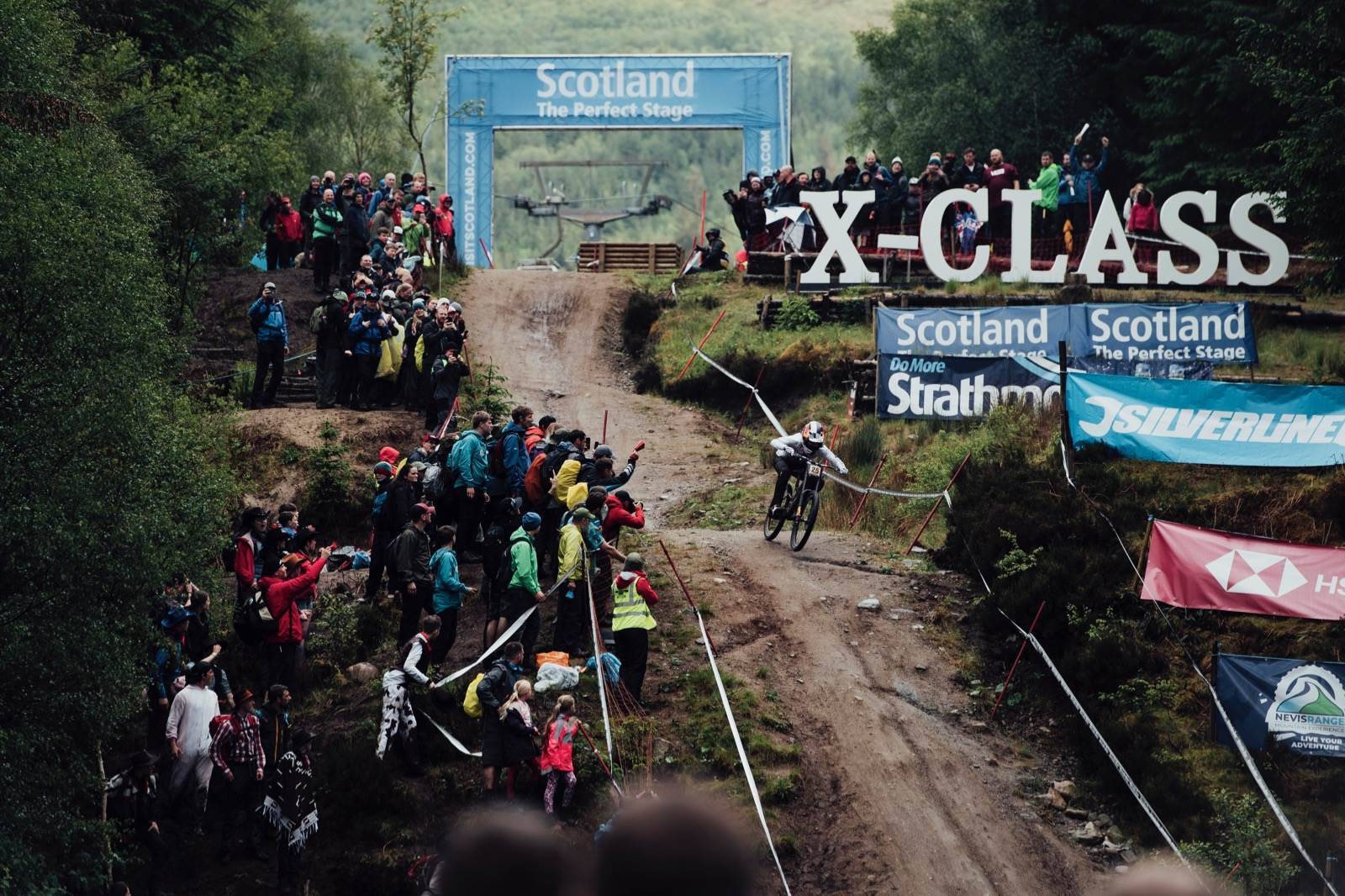
Sunday arrived dull and drenched, starting off with a string of juniors racing amongst steady rain. First timer Luke Meier-Smith took fourth to the podium in junior men, followed by Kye A’hern in seventh. The rain continued into Elite Women with Tracey Hannah sliding into second behind local favourite Rachel Atherton. Having won here two years ago, redemption goes unclaimed. Luckily a week later she would be back on the top step in Leogang.
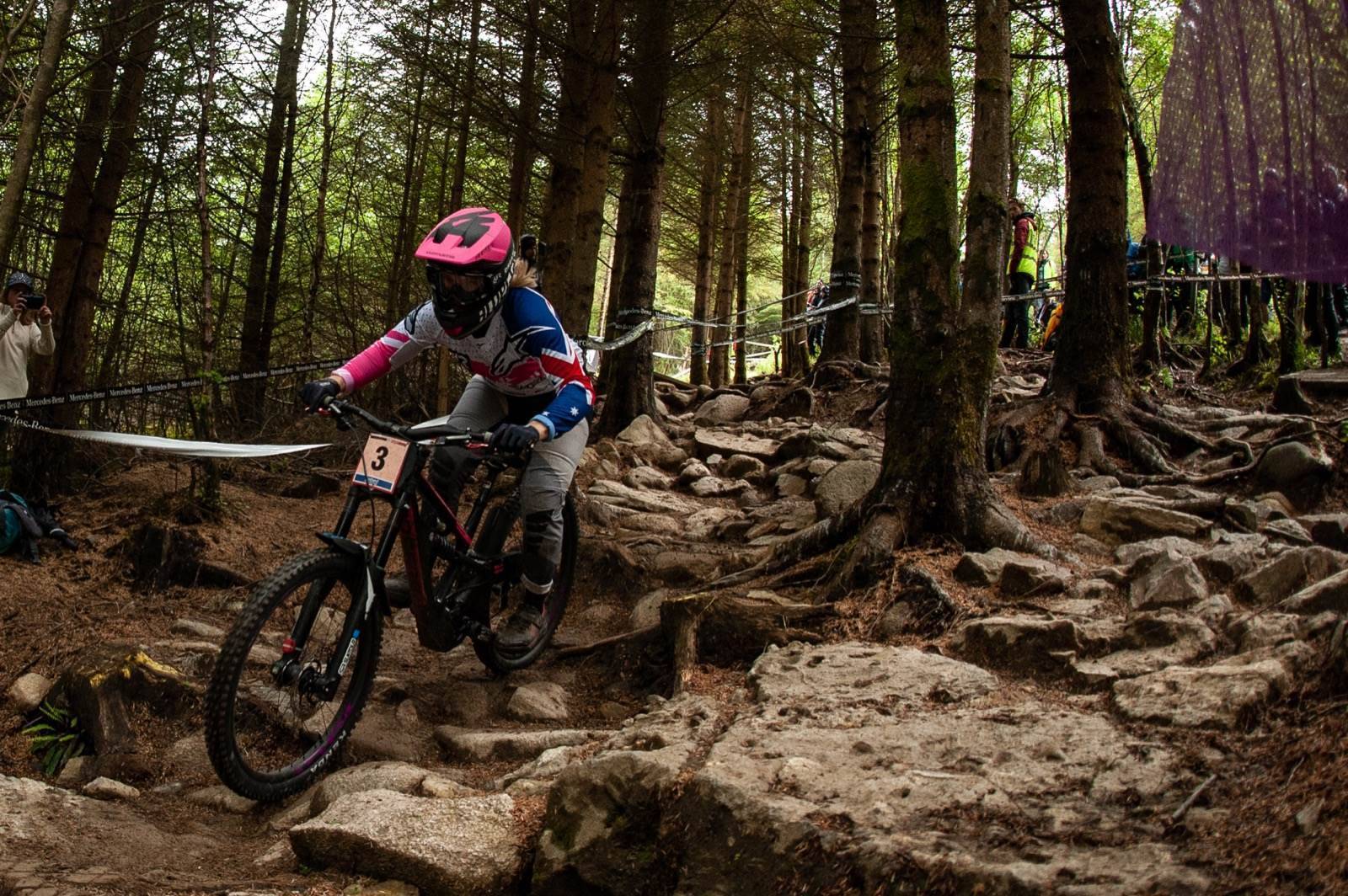
As the final race of the day got underway, the rain calmed down. The sun came out, the wind gusts set in and the rain continued as the weather vortex continued, creating an interesting platform for the world’s elite racers. Riders struggled in the wind and the crowd grew in volume with every finishing rider. The volume culminating in an almighty howl and sudden silence as Aaron Gwin summersaulted base over apex, twice, in the first thirty seconds of his run. The race has barely entered the top ten before Finn Iles made his throw for the podium. His success drowned out as once more the crowds volume raised for locals Danny Hart and even more for the ’Scottish squad’ representative Reece Wilson.
Mr consistent, Troy Brosnan looked to prove all my theories right. Home to his first professional win in 2014, the Fort has been kind to Brosnan having barely been out of the top five in the years that followed. This year looked to be no different as green, green, green the splits fell and victory seemed wholly within his grasp with just two more riders to go. Unfortunately no sooner had Amaury Pierron started his run and did they once again fall. Second for the fastest Aussie.
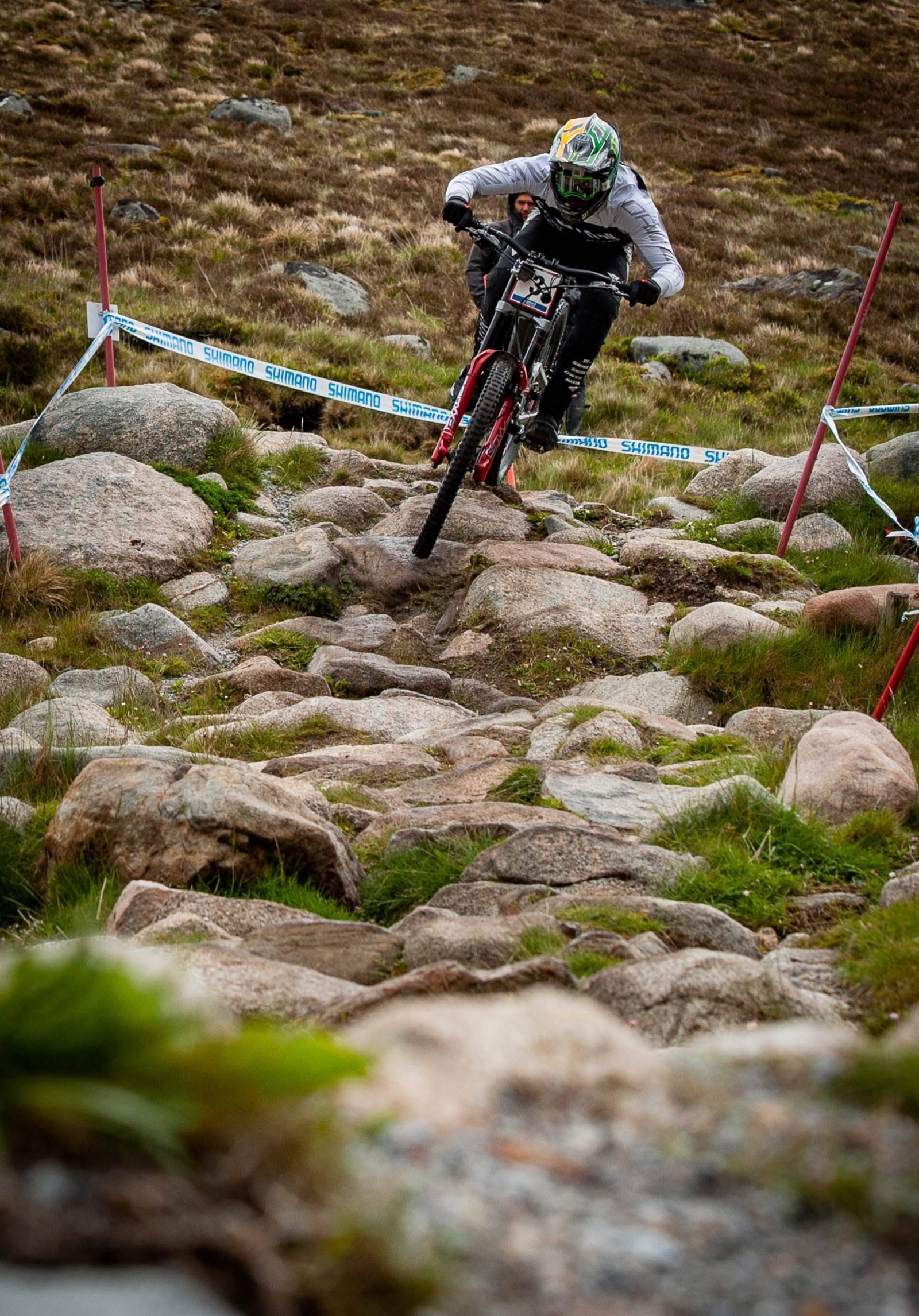
Post finals breakdown in the Kona tent, Connor Fearon related once again that the brutal nature of the trail was what held riders back. Even at this top level, there can still be surprised looks when someone carries unnatural speed through a split section. From there the conversation in the tent went toward the level of risk versus reward.

In the end The Fort is a place where everyone counts their sins, and anyone with a number board inside the top thirty can win, has won or is an up and coming threat who could win. This year it was Amaury Pierron and Rachel Atherton but next year the lottery dip is back on.

